Chukotethnoexp. Part IV. Chukotka
March The road becomes more well-defined. Mountains appear on the horizon. We enter Chukotka. Finally! 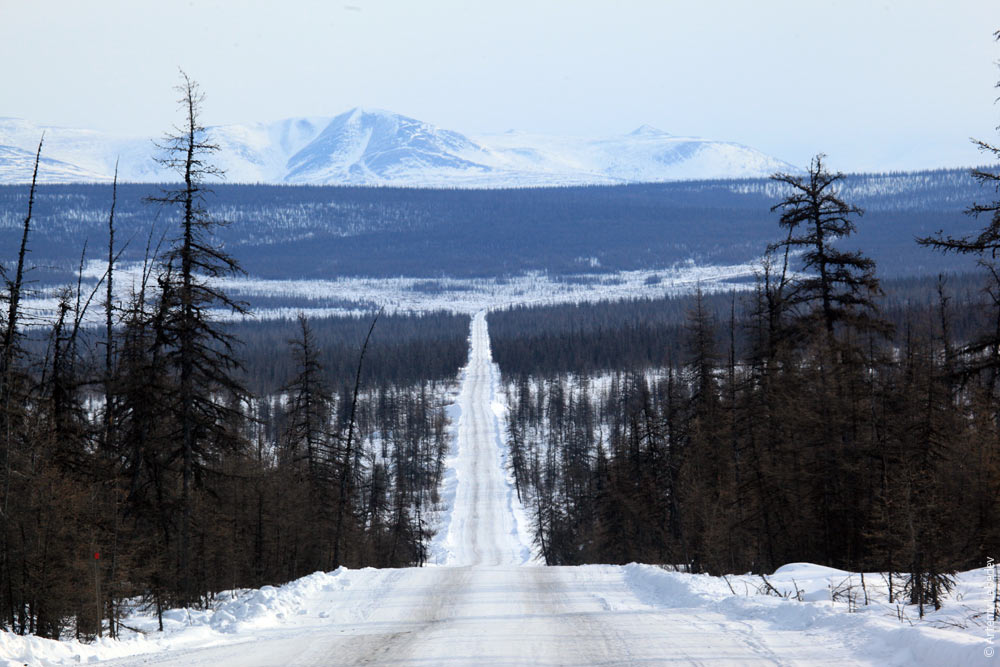 We learned about dwarf trees in natural history class in school. And here they are, the little darlings. 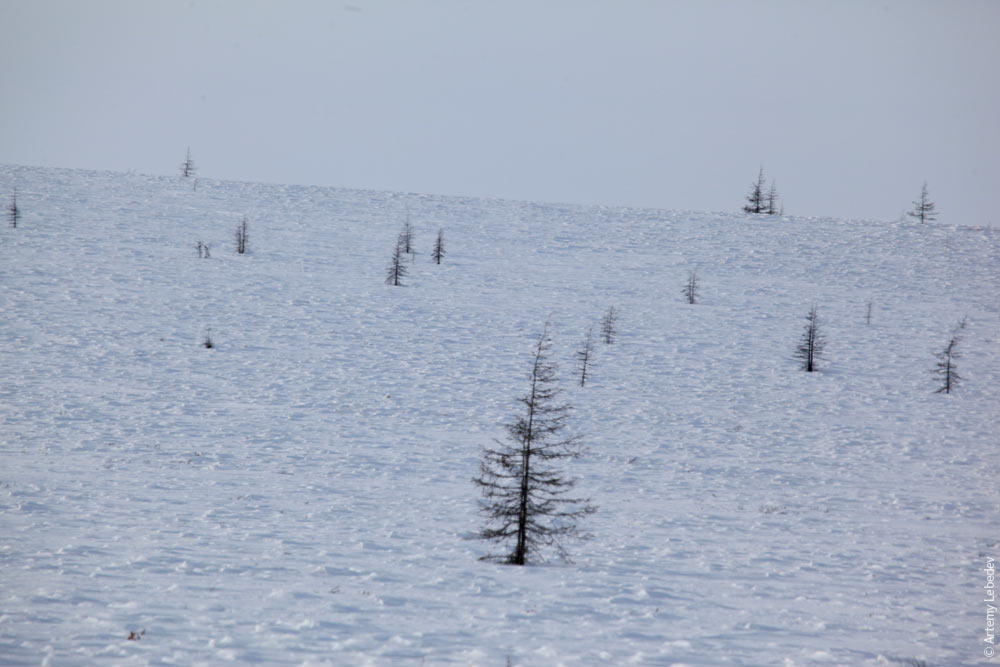 The bloggers pounce on every landscape. 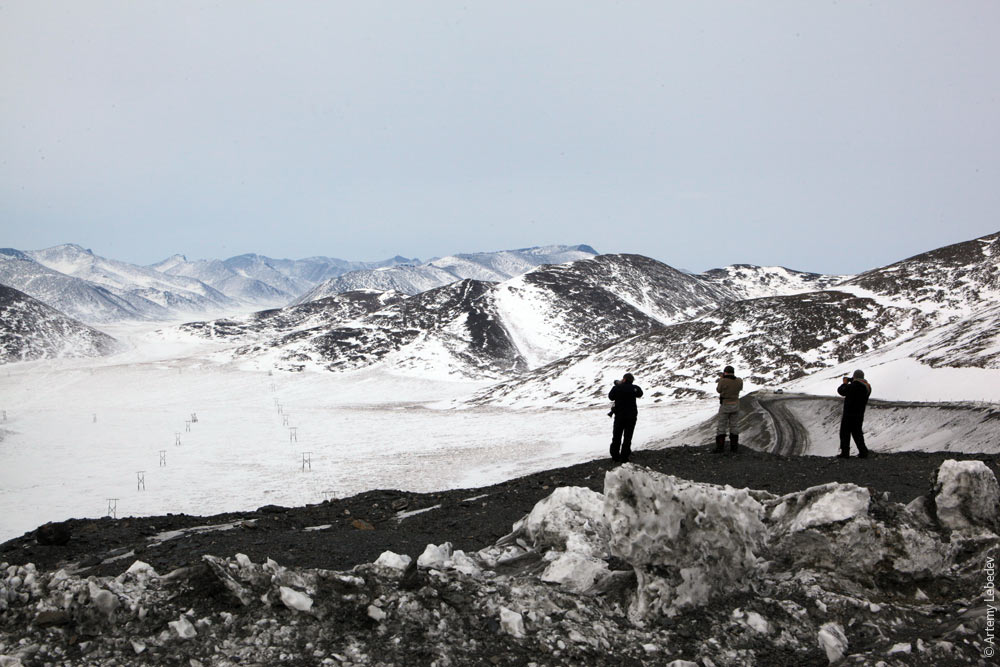 BilibinoMapThe city begins with a warning.  Bilibino. Driver! Remember that by operating a vehicle in an inebriated state, you risk becoming a criminal! Bilibino. 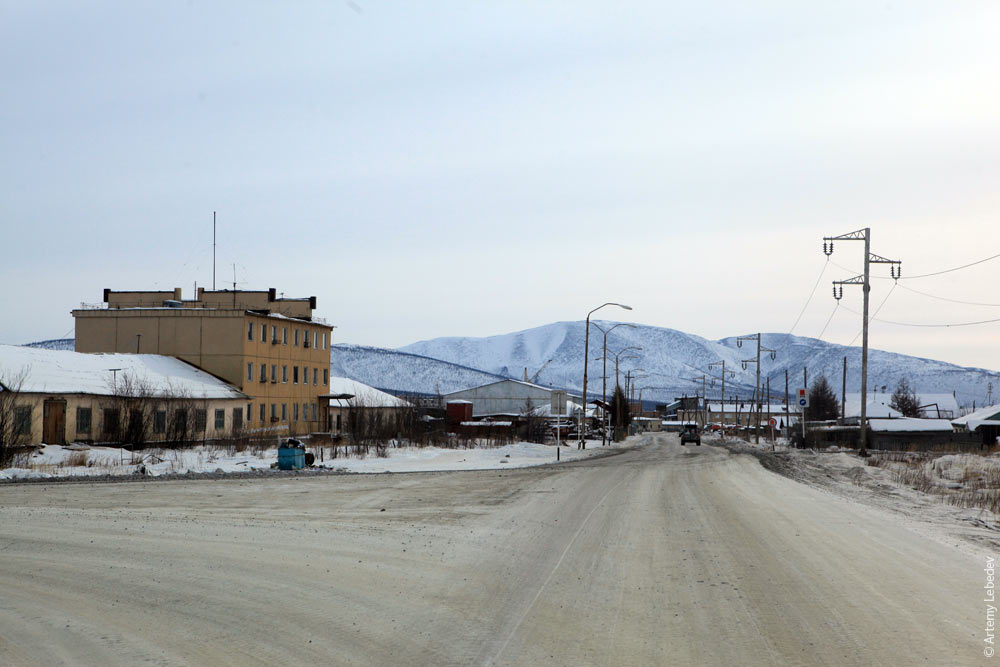 All the grocery stores have female names. 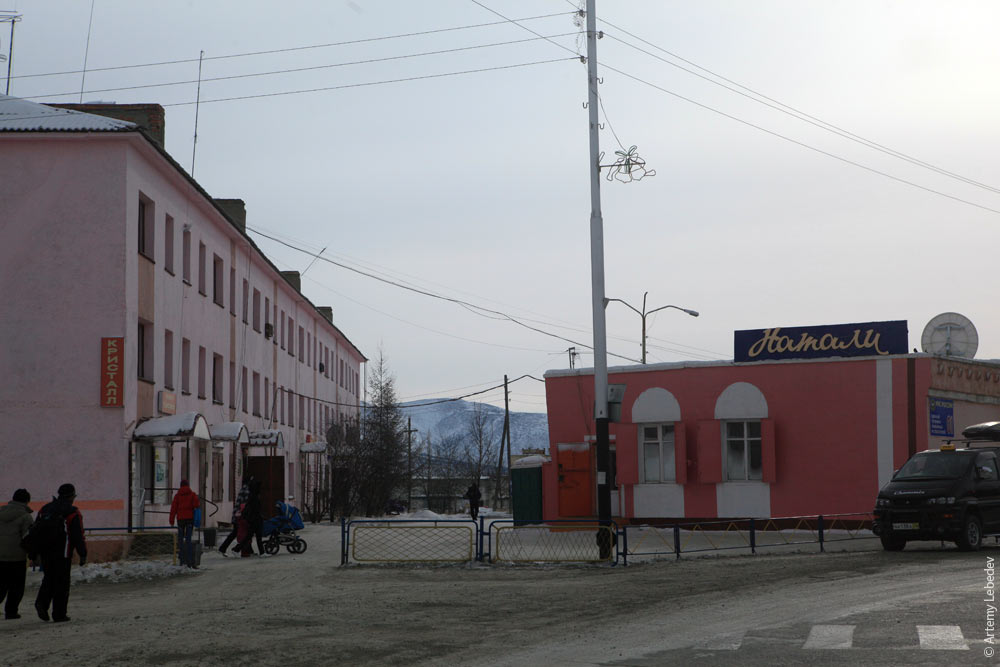 Natalie No one owns cars—everyone uses taxis. 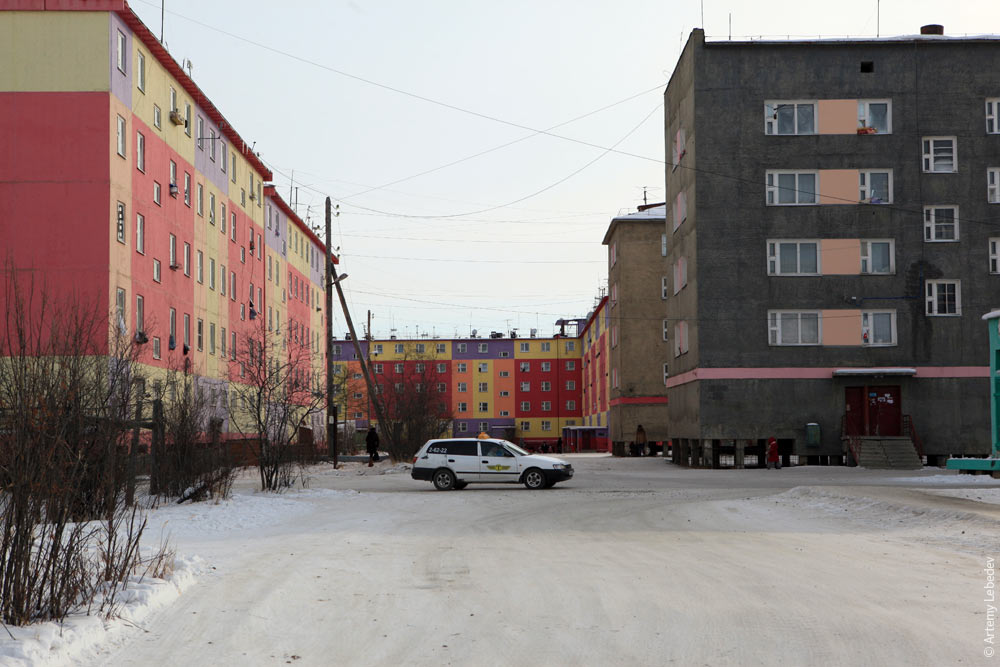 A unique Bilibino bus stop sign. 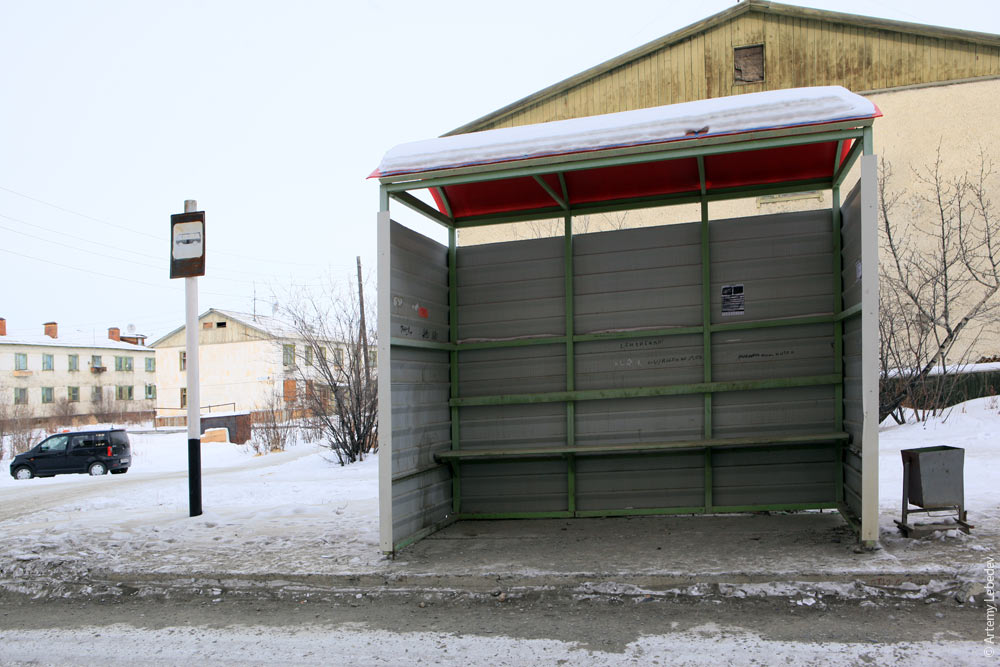 Flyers. 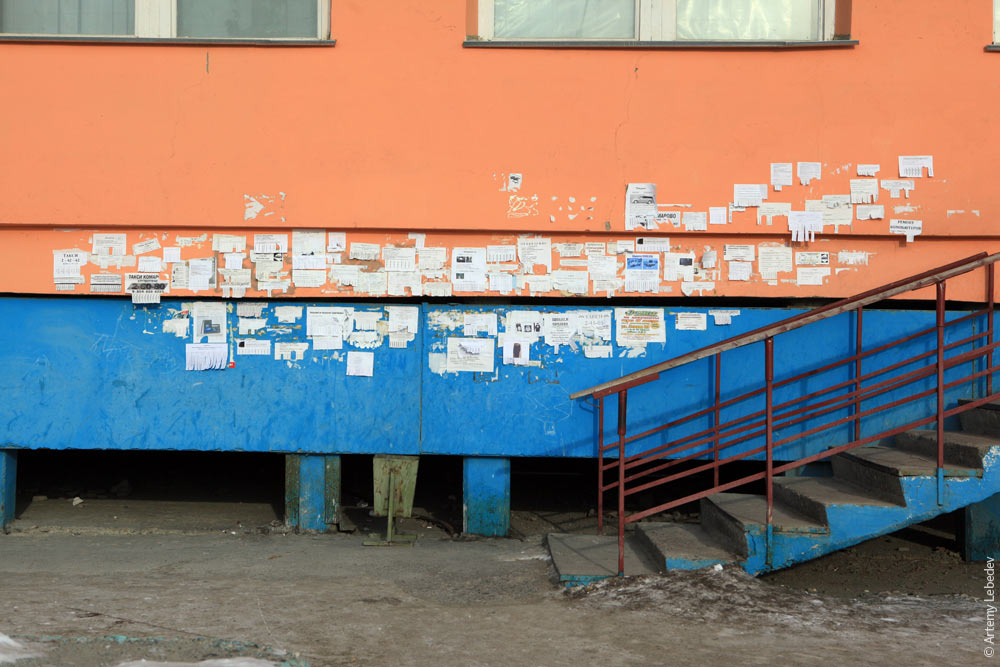 A passageway underneath a building. 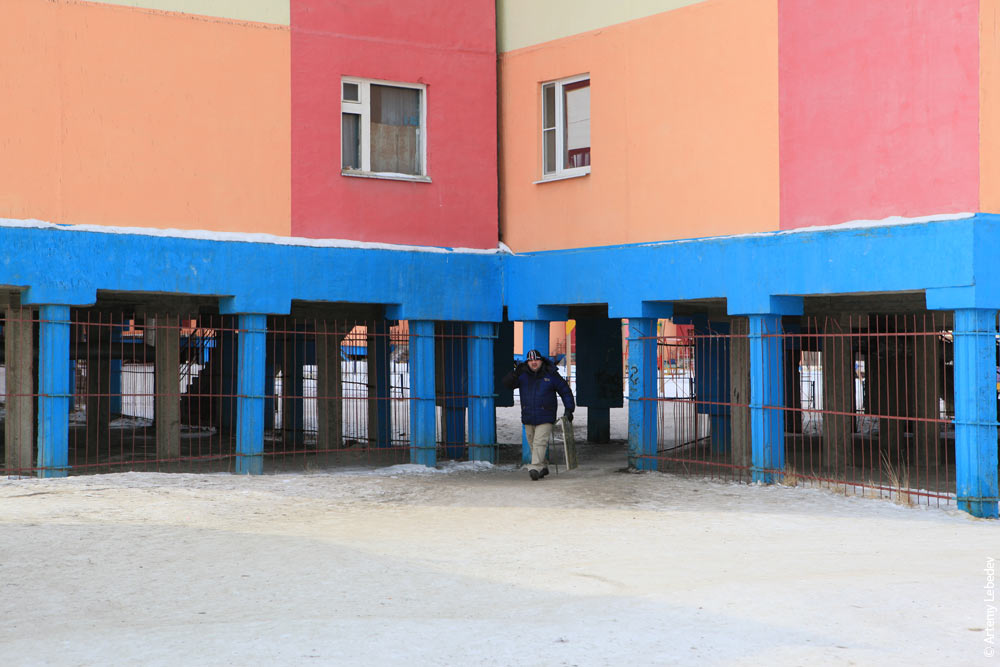 An independent fish merchant. 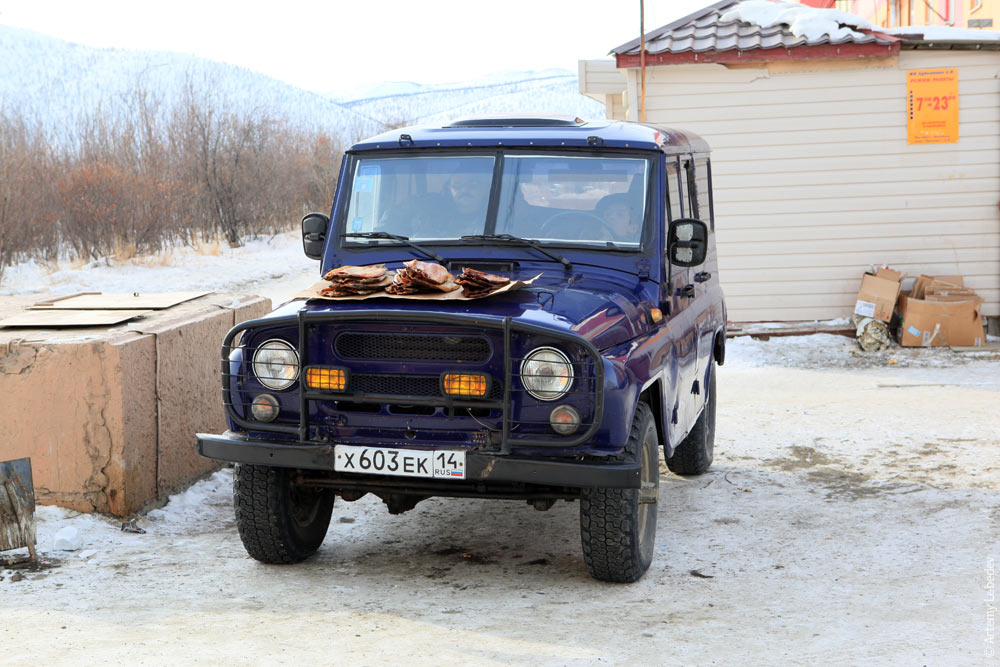 Trash dumpsters.  People use the outdoors as a freezer. 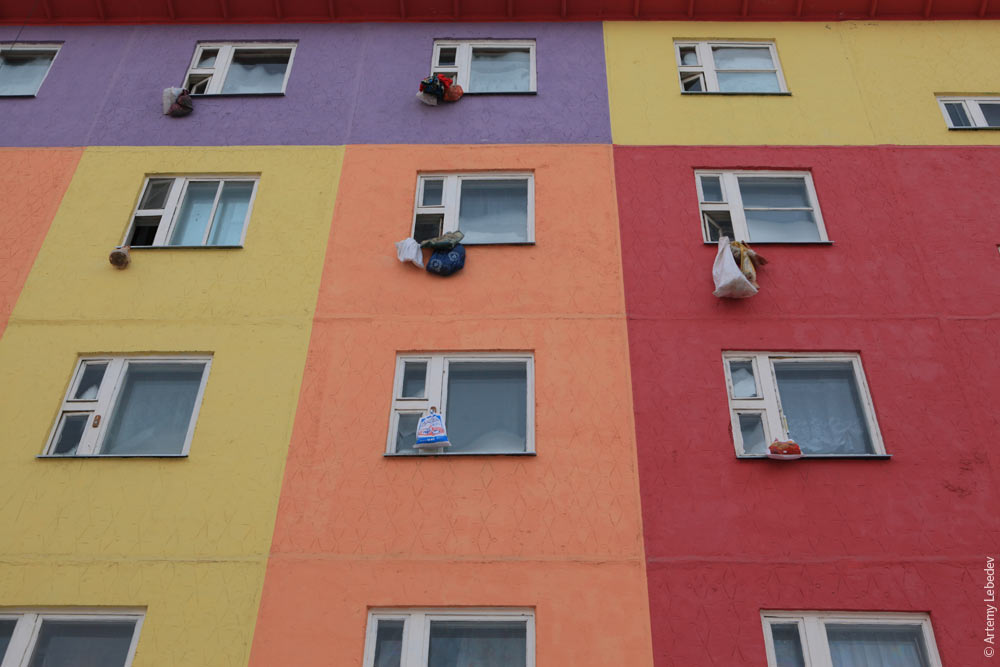
Bilibino is the most expensive city in the world. One egg costs 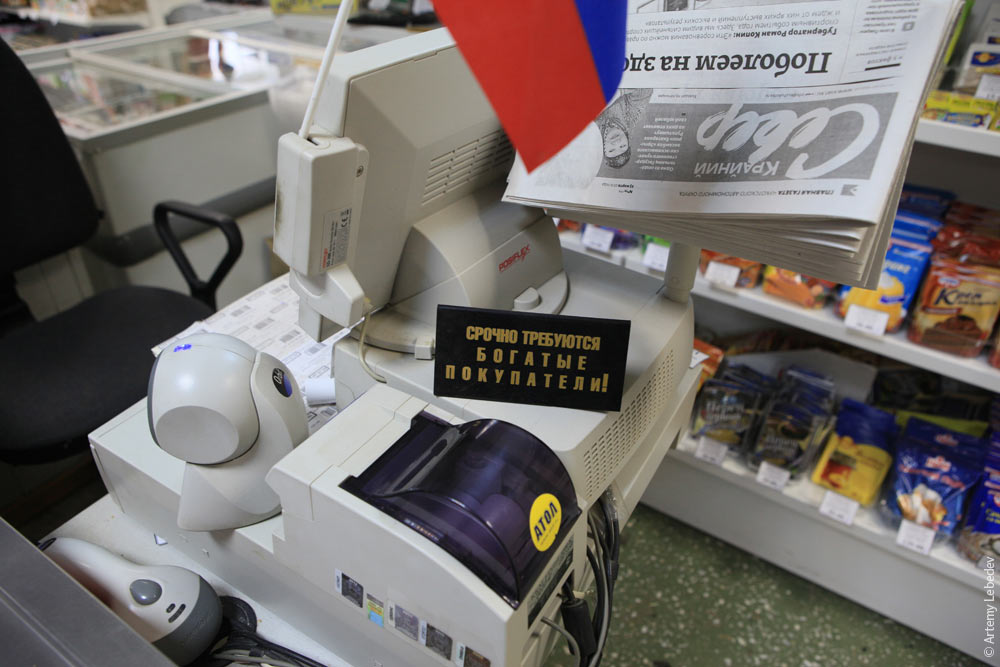 Urgently seeking wealthy customers! The city would be completely unremarkable were it not for one “but.” 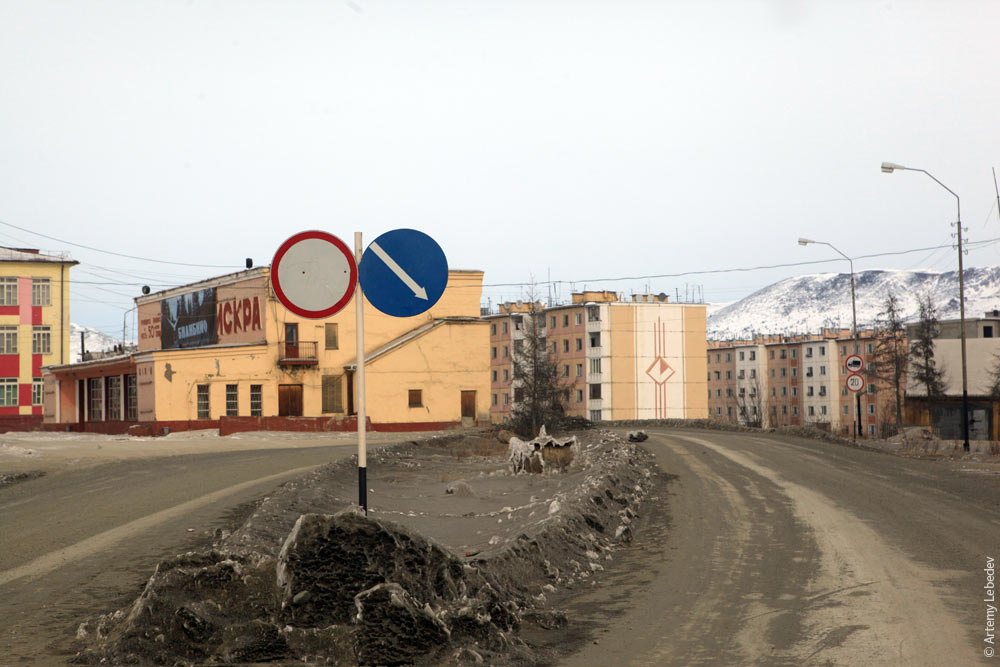 The only nuclear power plant in the world built on permafrost is located here. For some reason, during the Soviet era it was considered important to build such a plant. A snowman stands at the entrance.  The front steps are covered with an old carpet to make them less slippery. They thought of everything here, yet forgot about the steps. 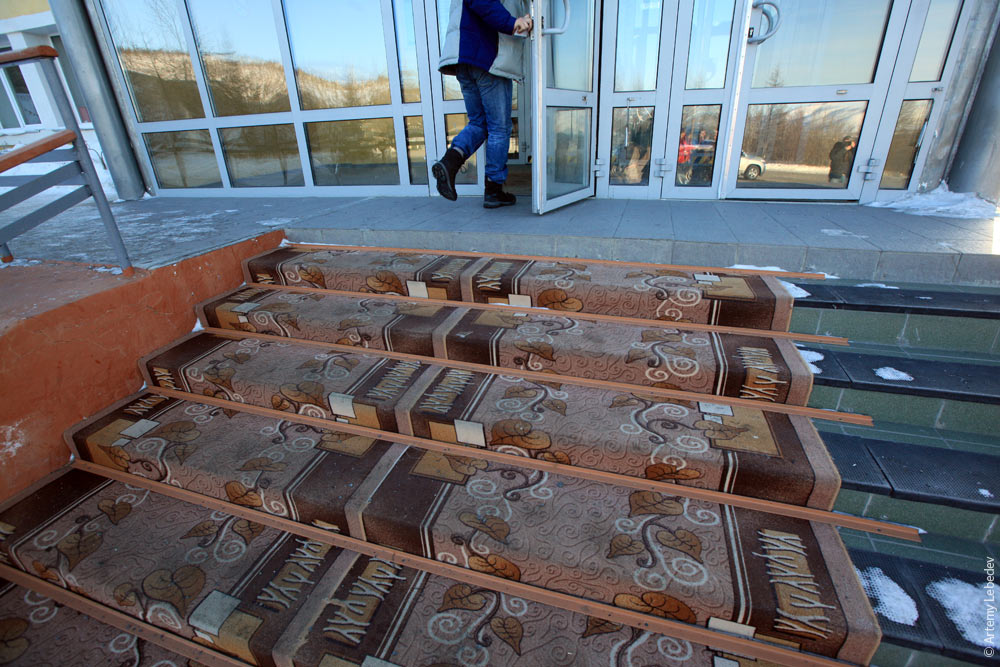 One of the doors is purely decorative. It’s a mystery why it was built, since it doesn’t open for anyone. 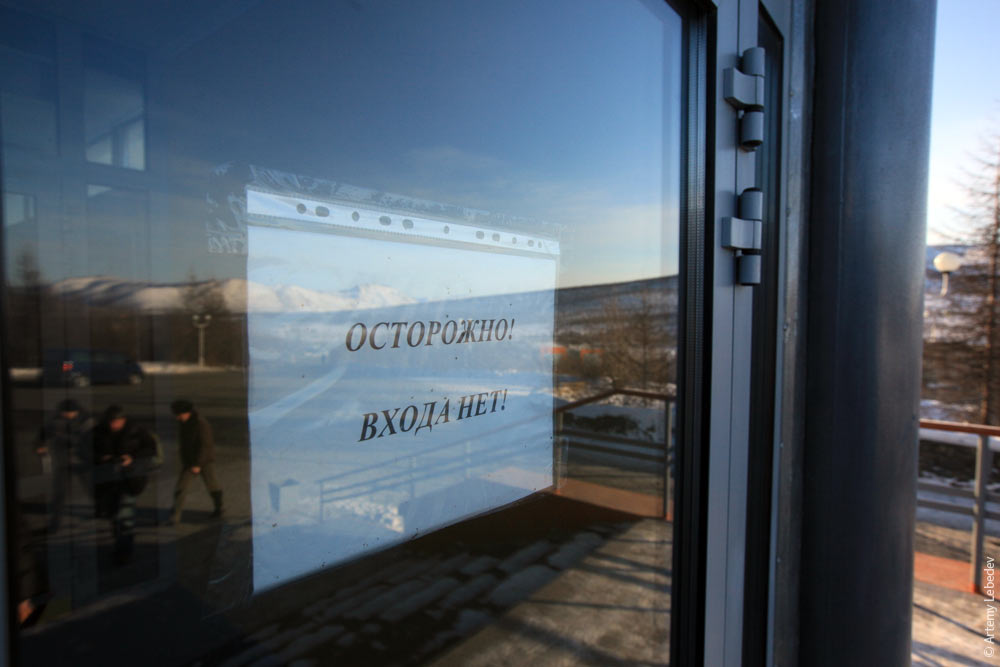 Caution! Not an entrance! A woman in uniform at the entrance checks our cameras’ serial numbers against her list. You can’t just use anything you please to take photos—it has to be the camera with the serial number which you sent in by email a month in advance. 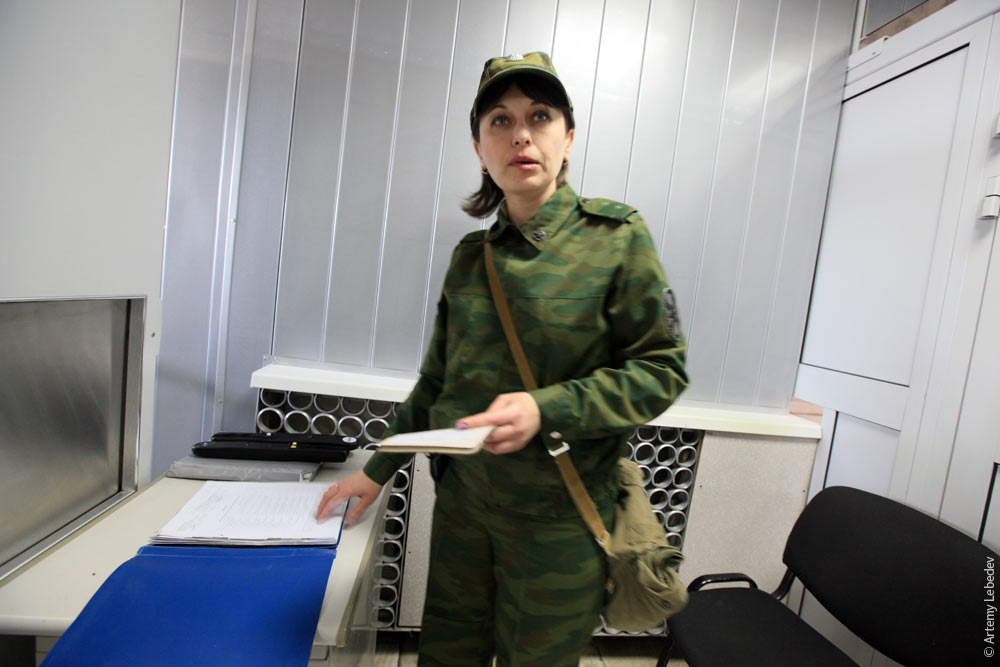 A nuclear power plant is cleaned just like any other establishment.  Shelter — 18 m The plant’s employees create the pictograms for fire exits themselves. 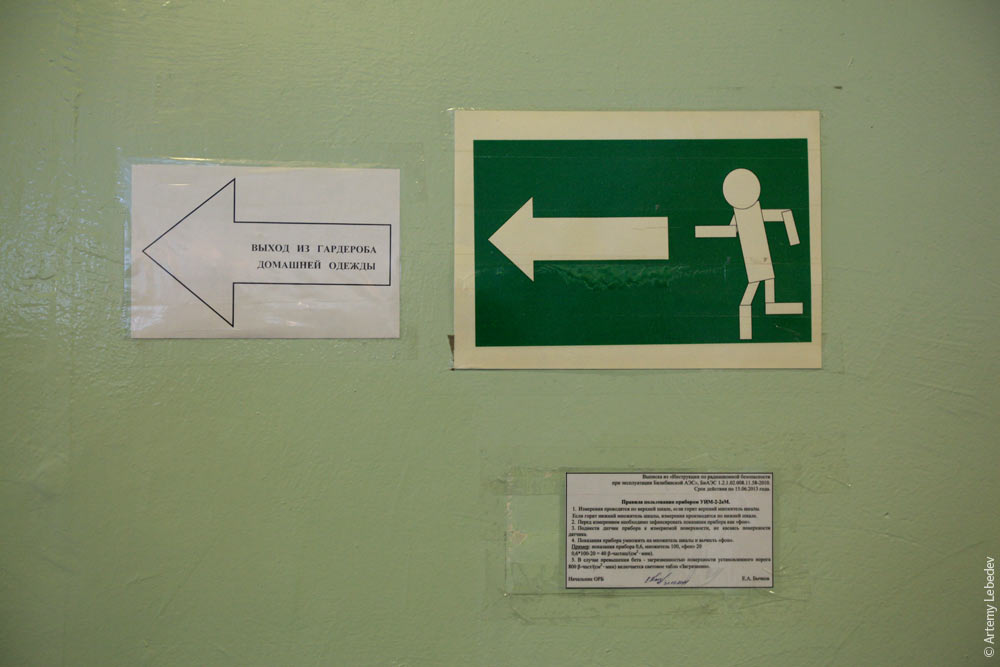 Street clothing locker room exit Bilibino always knows whether it’s a good time to call Moscow. 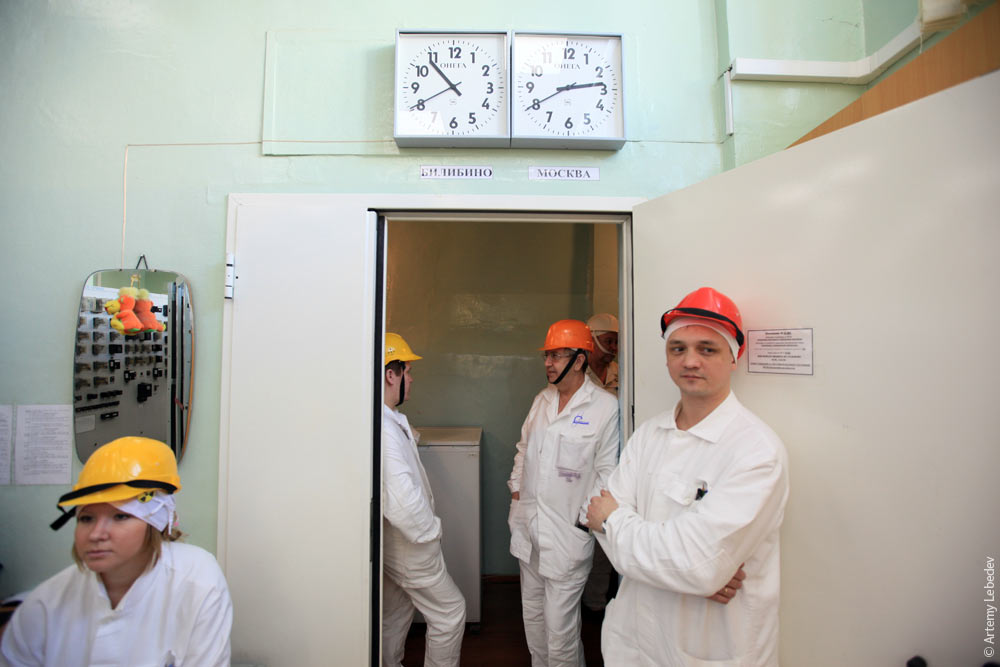 Bilibino. Moscow “Petrovich, hand me a wire, will you? The fuse blew, and I can’t be bothered to go get a spare.” 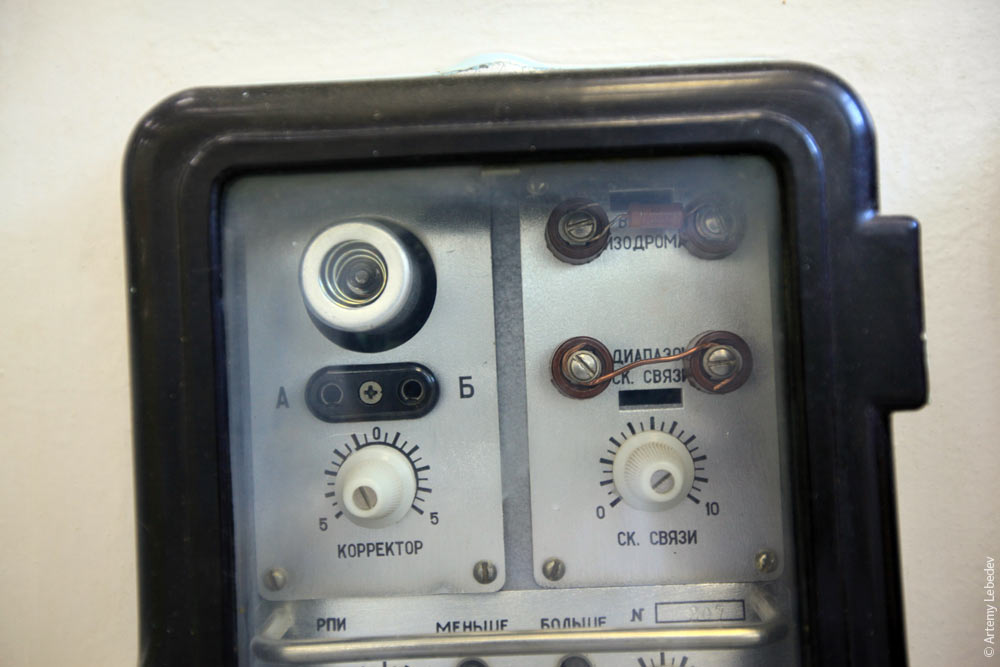 Corrector. Connection speed range. Connection speed. In Soviet times, the plant operated purely on the principles of materialism. The free market era brought new methods of ensuring work safety and security: making the sign of the cross and praying. 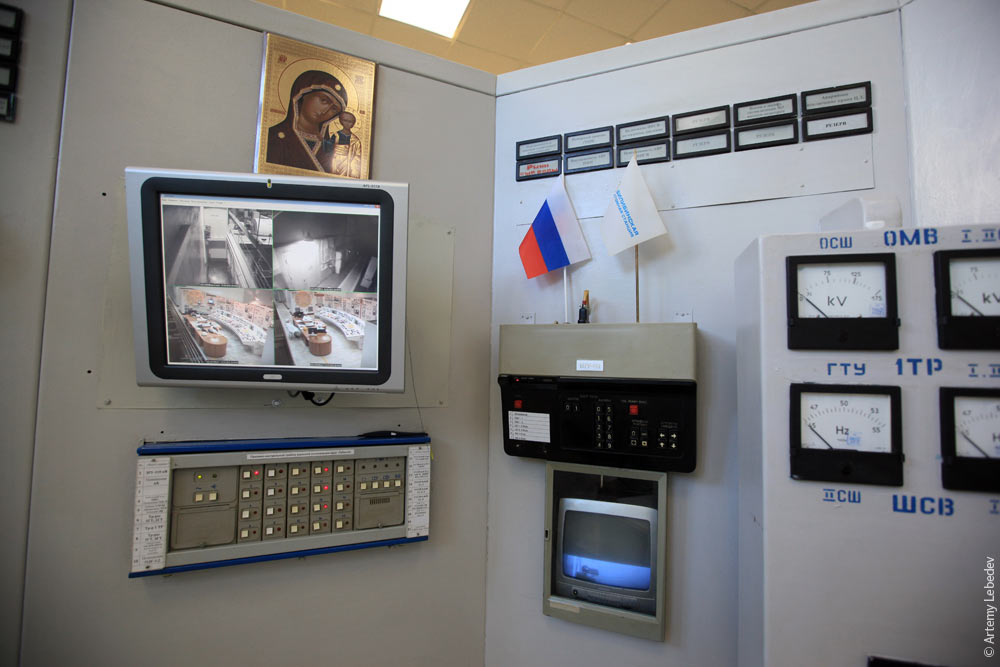 All the responsibility was immediately laid on me. 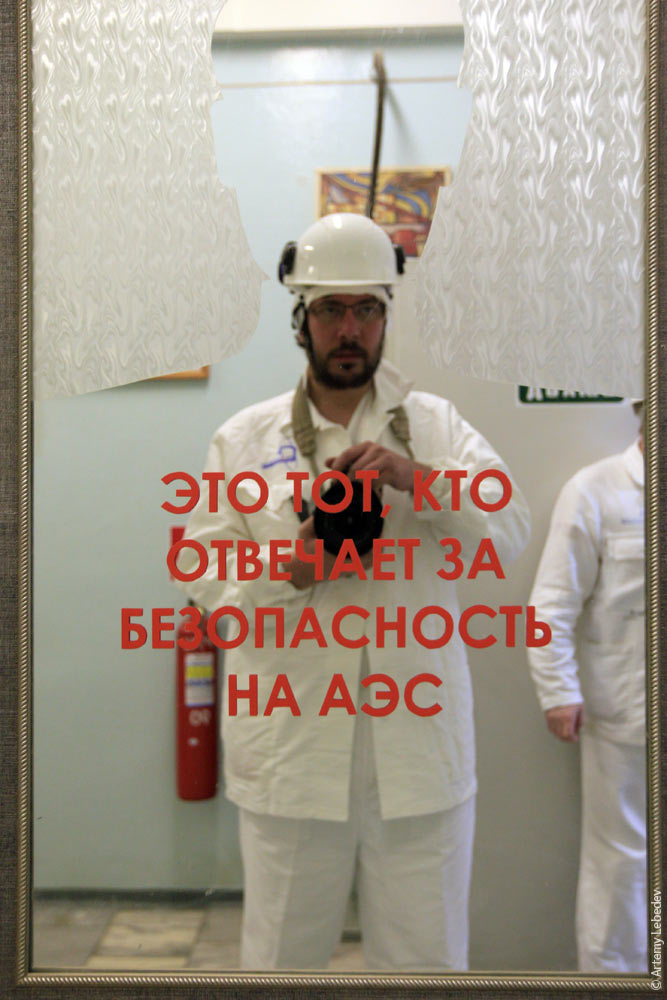 This is the person responsible for safety at the plant The remote reactor power control panel. So that they know what they do. 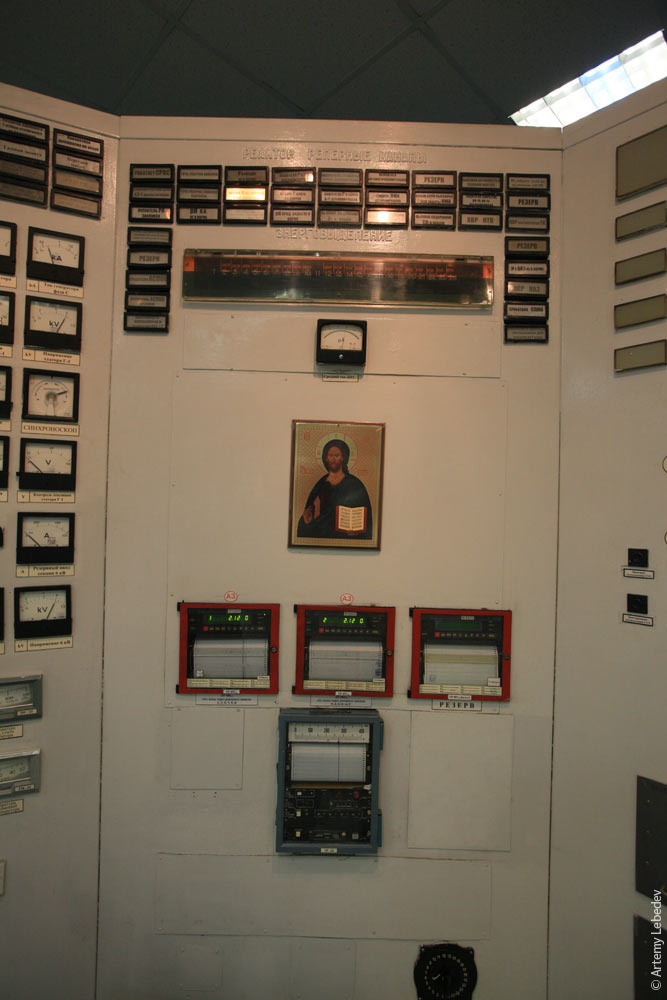 Men at work. 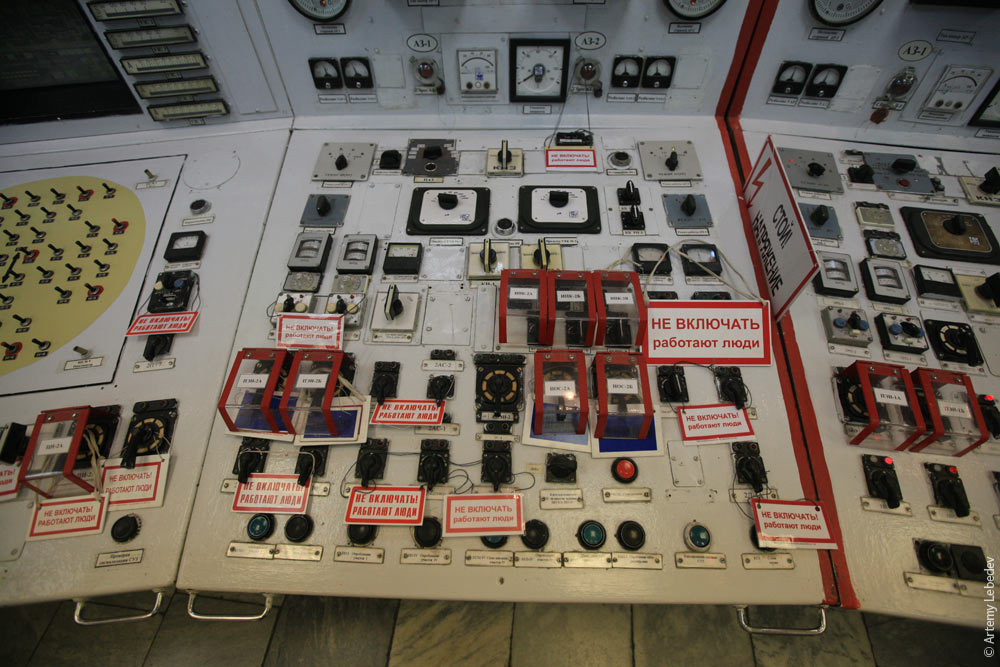 Do not turn on! Men at work And finally, we get to the most interesting part. The reactor room. The pit in the foreground surrounded by a red ring is one of the reactors. Graphite rods are hung up on the walls. They hang there so casually, like dried fish on a rope at the market. 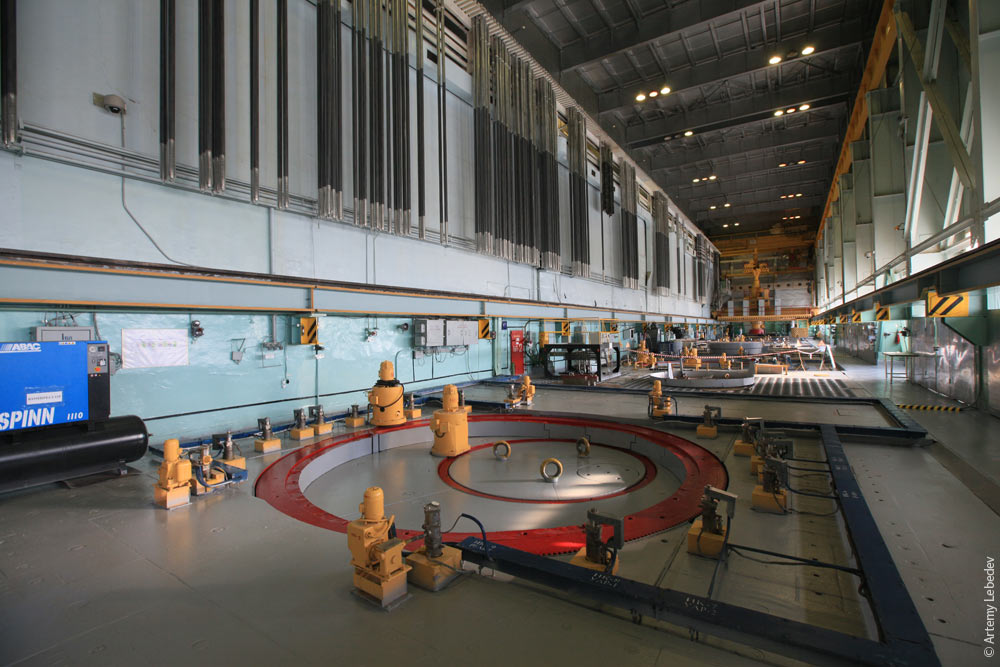 Let’s get a bit closer to this reactor, which is currently getting repaired. There’s a pile of slippers in front of it, as if in front of a mosque. 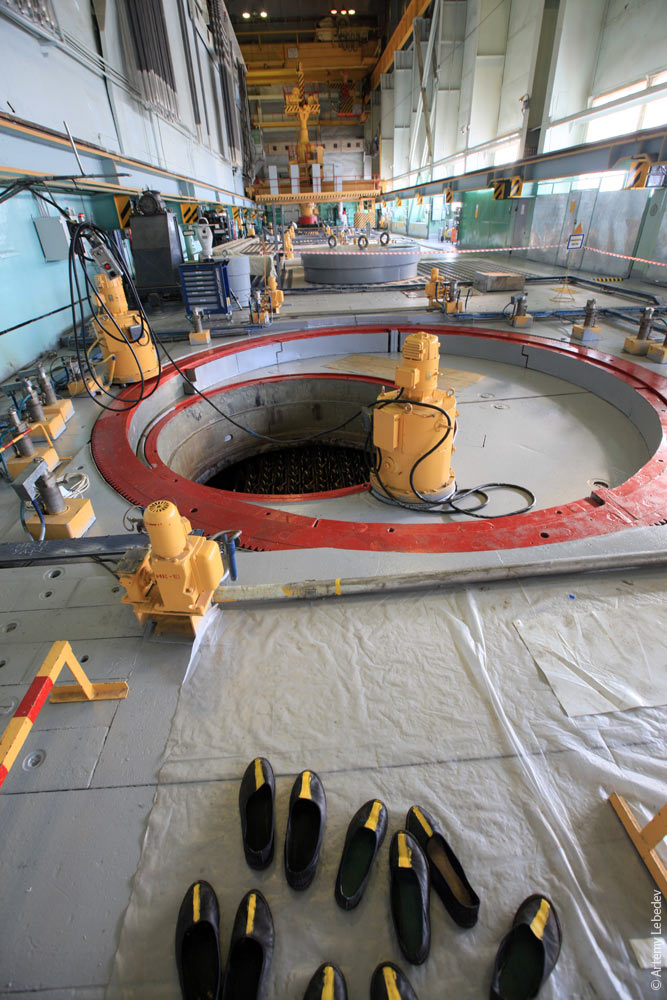 About two hundred or so graphite rods are placed into each reactor. Then everything is sealed and water pressurized to 60 atmospheres is fed into the reactor. Its temperature is 270 degrees Celsius. The function of the reactor is to heat the water enough to turn it into steam. All it takes for this is to raise its temperature by six degrees. Part of the water will indeed find itself unable to tolerate this kind of mistreatment and will turn into steam. The steam is fed through a turbine, the turbine starts turning, and the turning motion generates electricity. In other words, the nuclear power plant is essentially a giant boiler which heats water up by six degrees. And here I thought electricity was produced in a more scientific manner, somehow. Despite everything, it’s cold and draughty in the reactor room in the winter, so the windows are covered with plastic sheeting, like in a greenhouse. 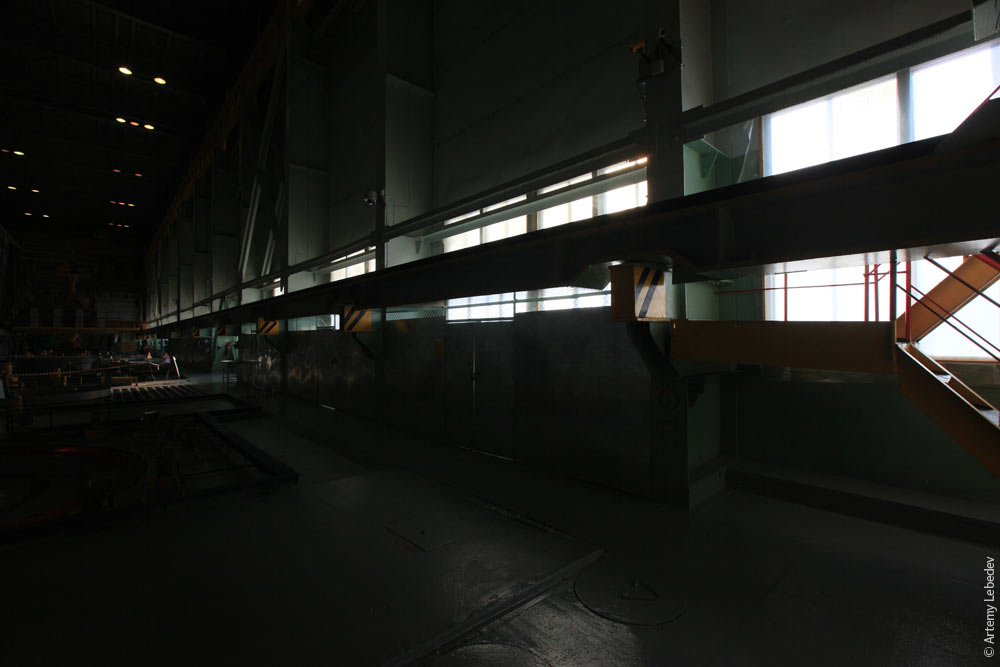 All in all, everything is tidy and well-maintained here. Shouldn’t blow up or anything. 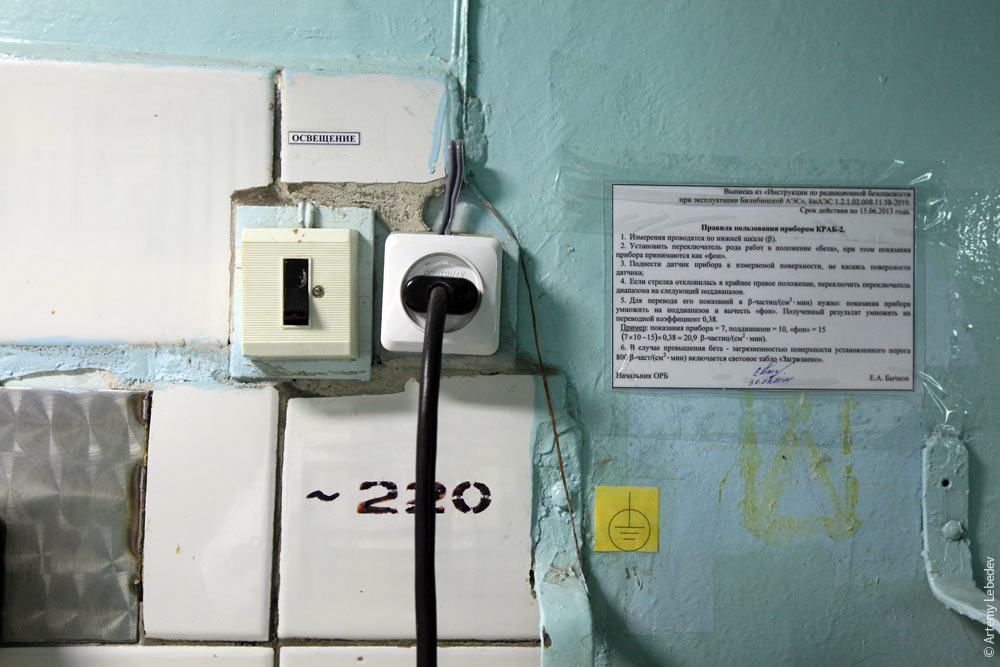 Lighting. CRAB-2 device directions for use BaranikhaMapSuch a place used to exist once. 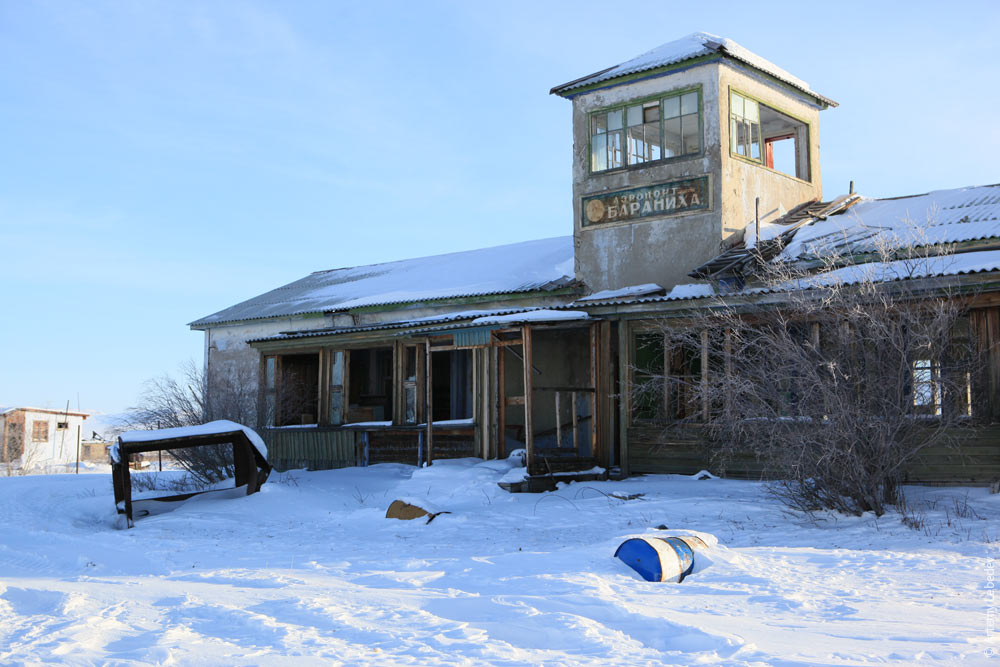 Baranikha Airport It no longer does. 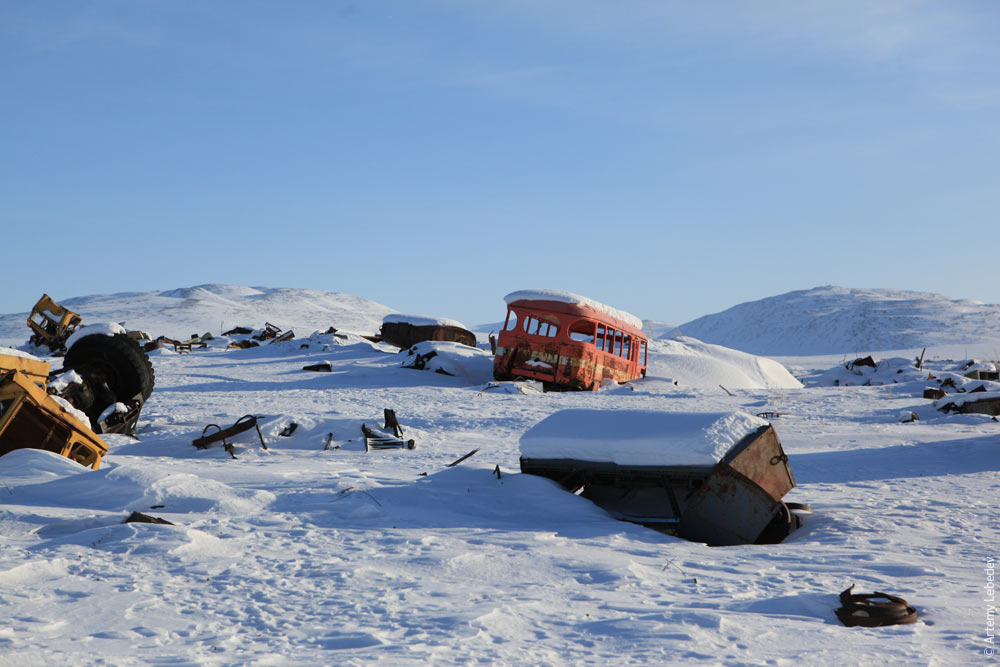 The road still goes right through it, out of habit.  Time for the last stretch of the drive to Pevek. A difficult day lies ahead. A difficult 24 hours, rather. Find the itty-bitty car:  A beautiful halo appears in the sky. 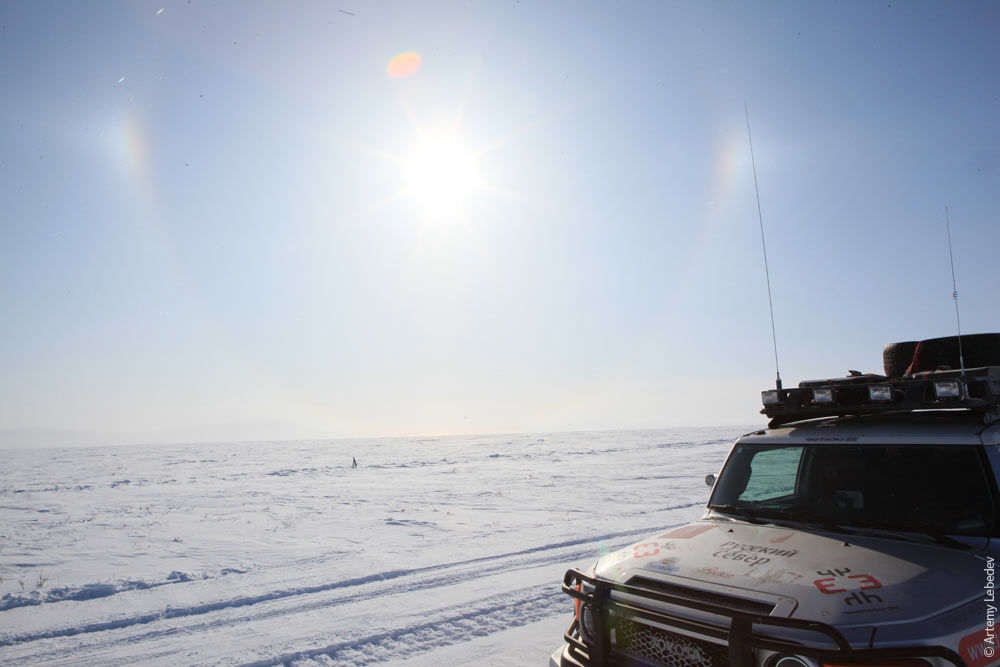 We reach the coast. What we’re looking at now is the Arctic Ocean. We observe an unfamiliar navigation device, something along the lines of a lighthouse. 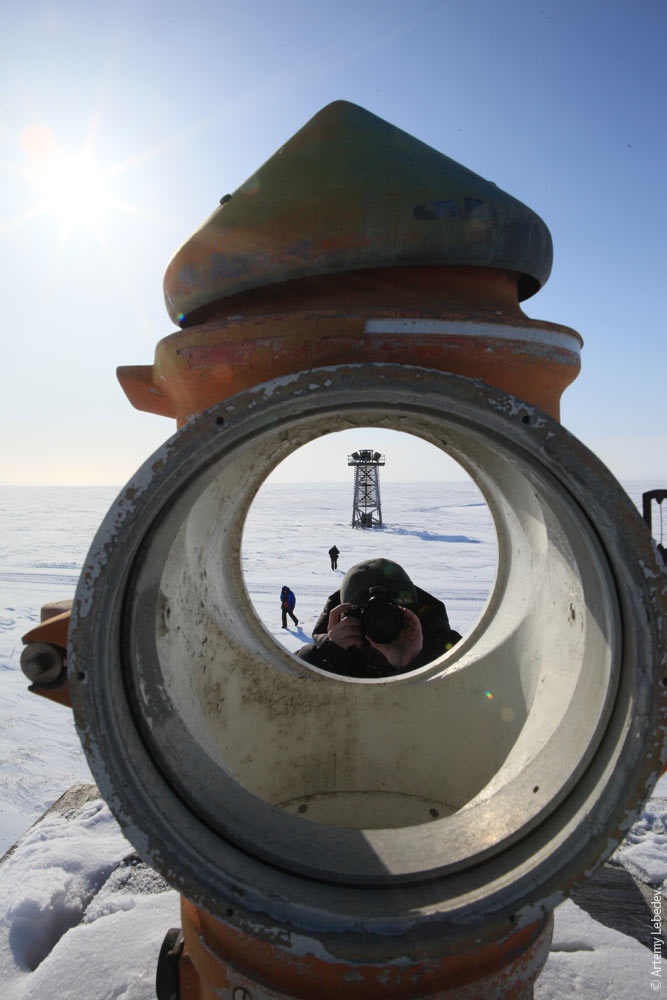 Our little cars are ready to finish the drive to Pevek today. 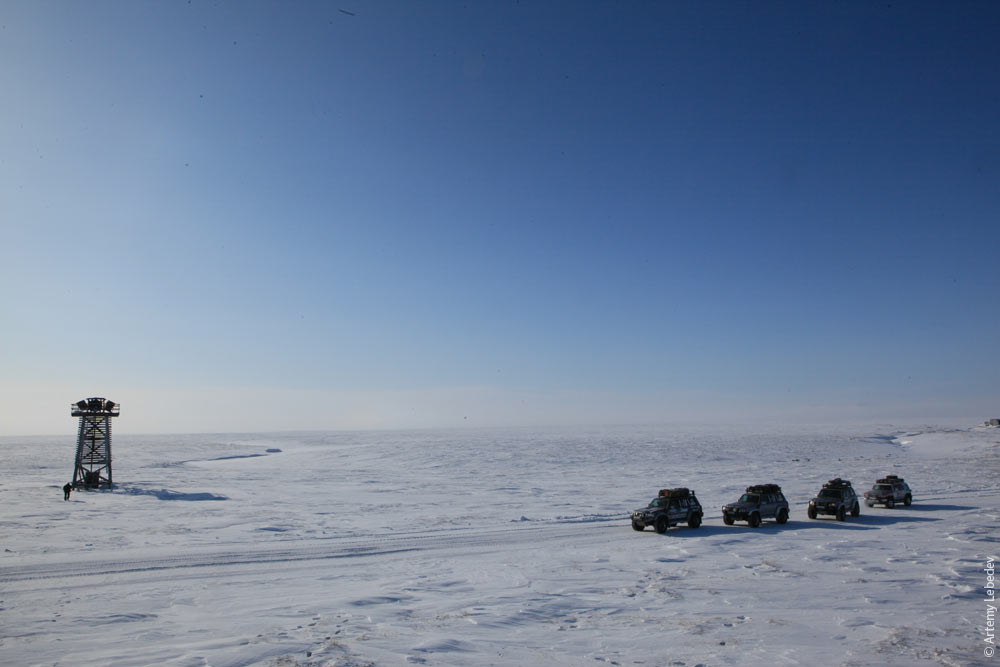 The road has been cleared. This is the responsibility of two tractor drivers, who live in a marvelous little snow house. 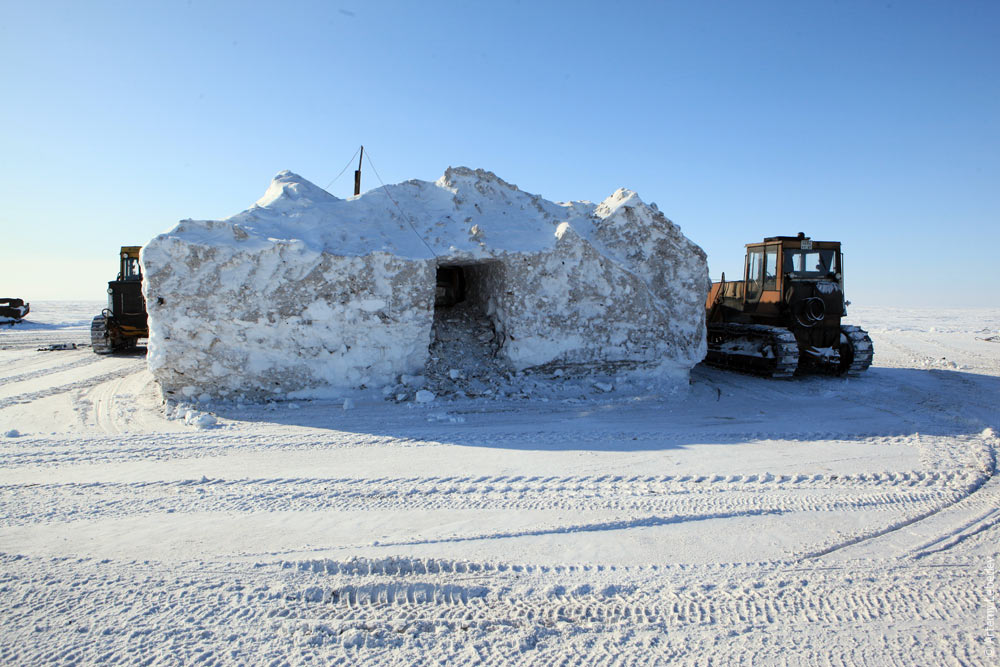 But then a blizzard hits. The kind where the wind and snow blow only along the ground surface. If you look up, the sky is blue; at night, you can see the stars. 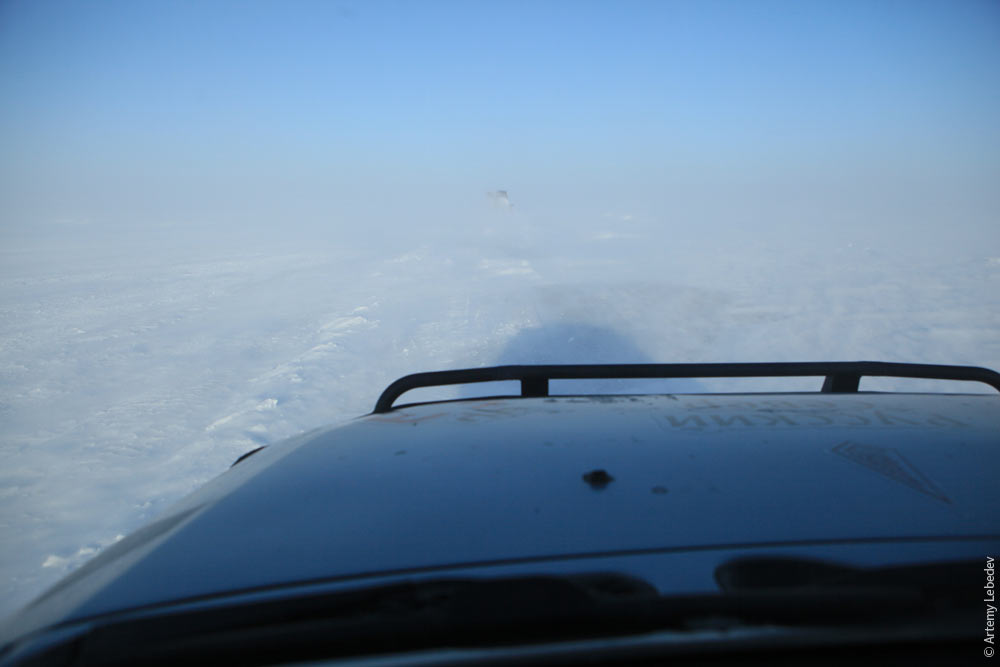 You can’t see a single thing in front of you, however. And then there are the snowdrifts. Tongues of snow which are very difficult to drive through. 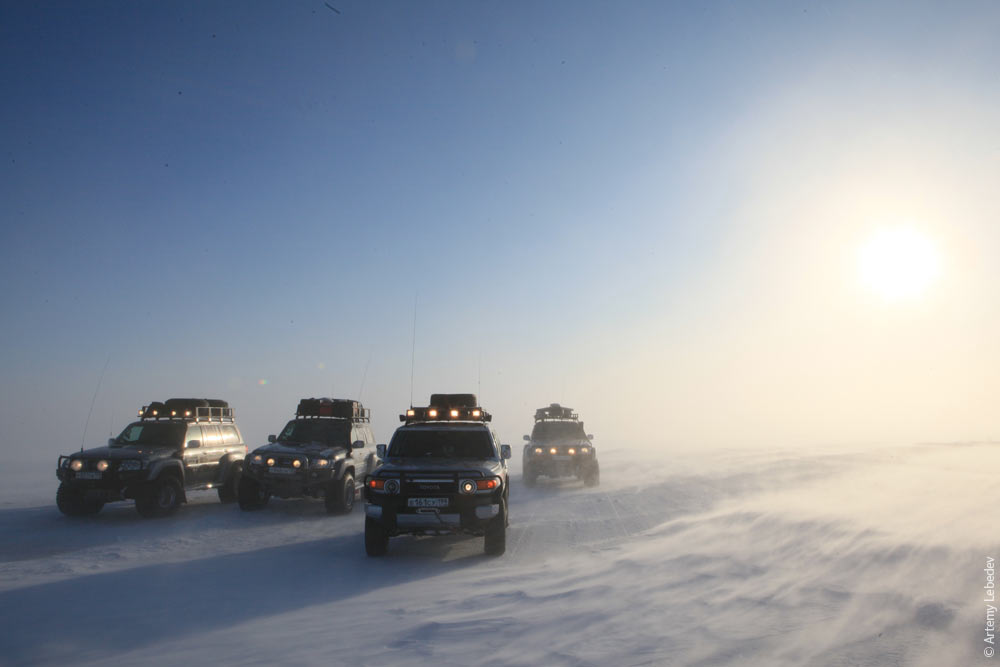 The blizzard gets worse as evening falls. We park for a few hours, because it’s impossible to drive. The speed of the wind reaches 25 meters per second. You could just lie down on top of it and hover above the ground. If you try to stand, it blows you off your feet. Pure hell outside. Coucousique is barely plodding ahead. It makes it through about 50 meters, gets stuck solid. We take a look under the car and... dum dum dum... And what we see is an enormous buildup of ice and snow. It must have formed while we were standing in the wind. Hitting it with a shovel elicits no response. There’s two centimeters of clearance. 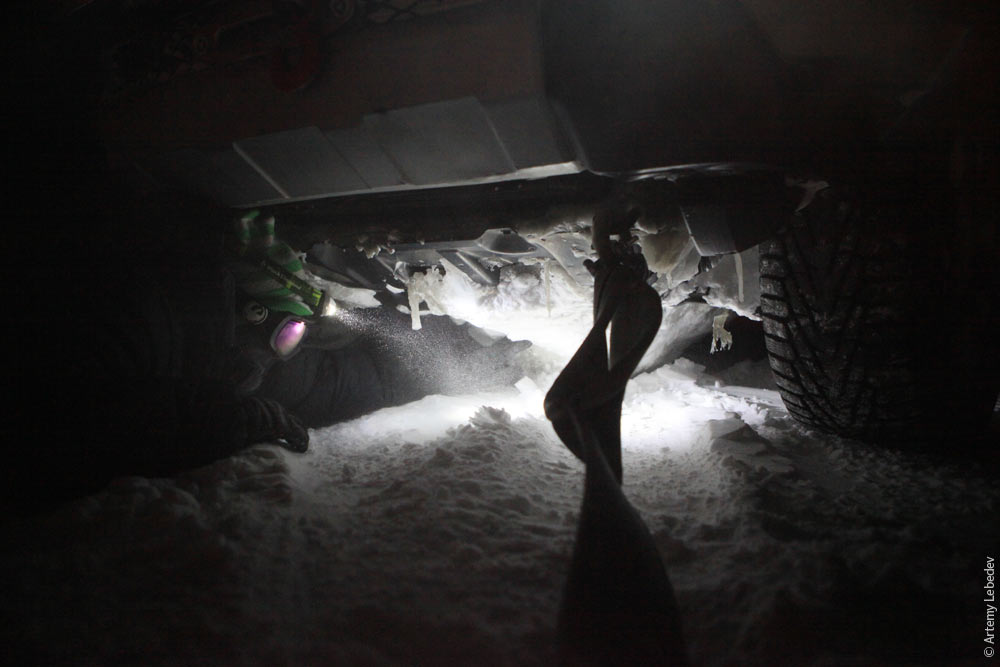 We use our two-way radio to reach out to some guys driving past, and one of them agrees to tow us. 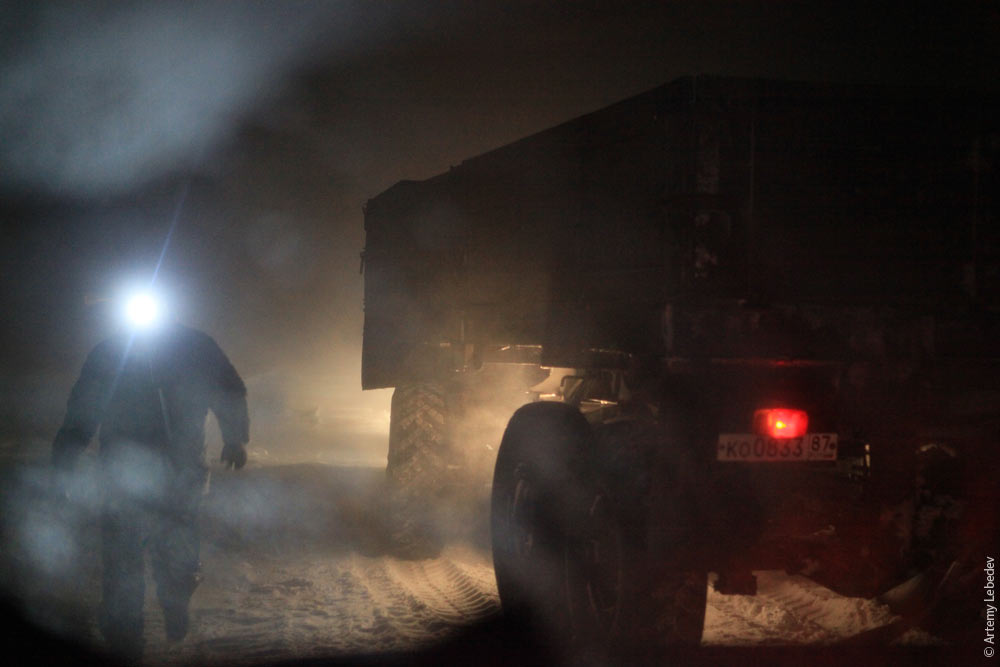 22 hours without sleep. We follow the truck for about four hours. I pass out behind the wheel. Dawn breaks. The road becomes visible again. PevekMapCivilization. 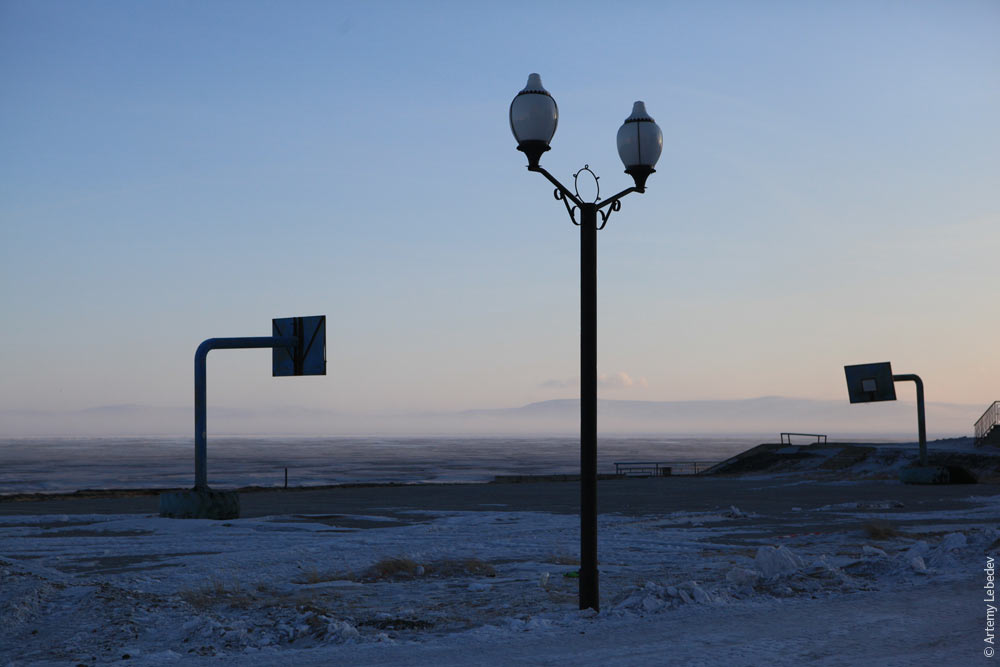 Hotel Pevek. 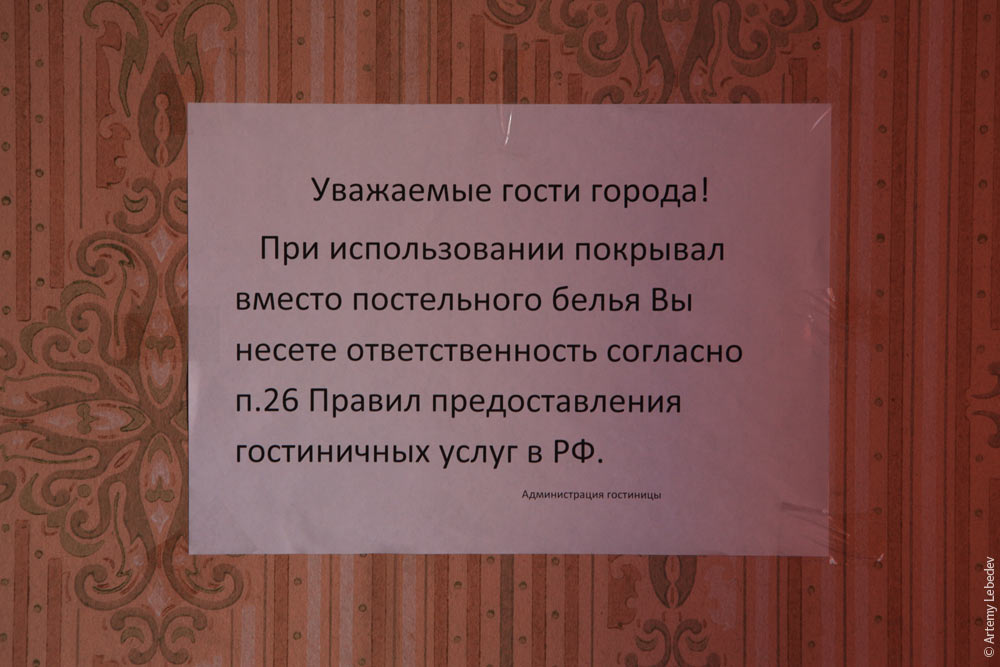 Dear guests of our city! If you use the bedspreads in place of sheets, you will be held liable in accordance with clause 26 of the Rules for Provision of Hospitality Services in the Russian Federation. Hotel administration A “deluxe” room for 2570 rubles ($80) a night. 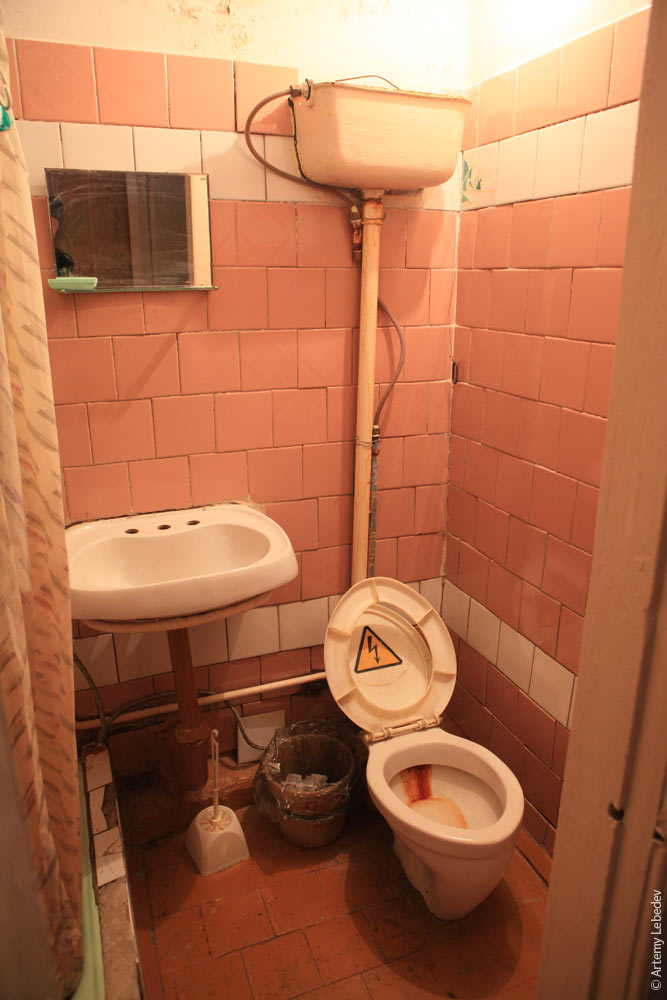 The city. 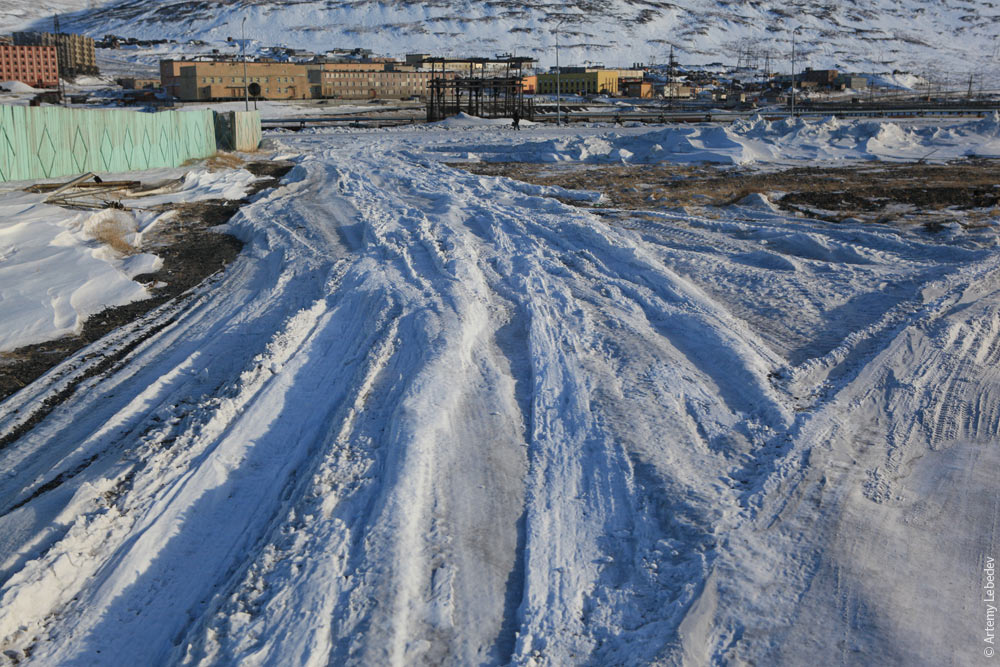 The northernmost city in Russia. 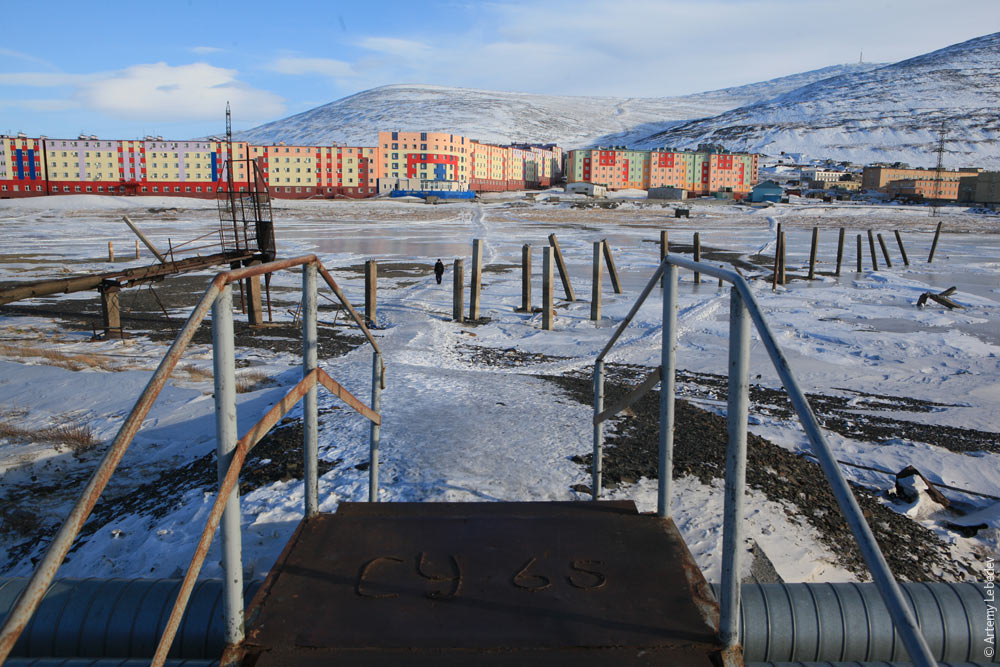 A still life. 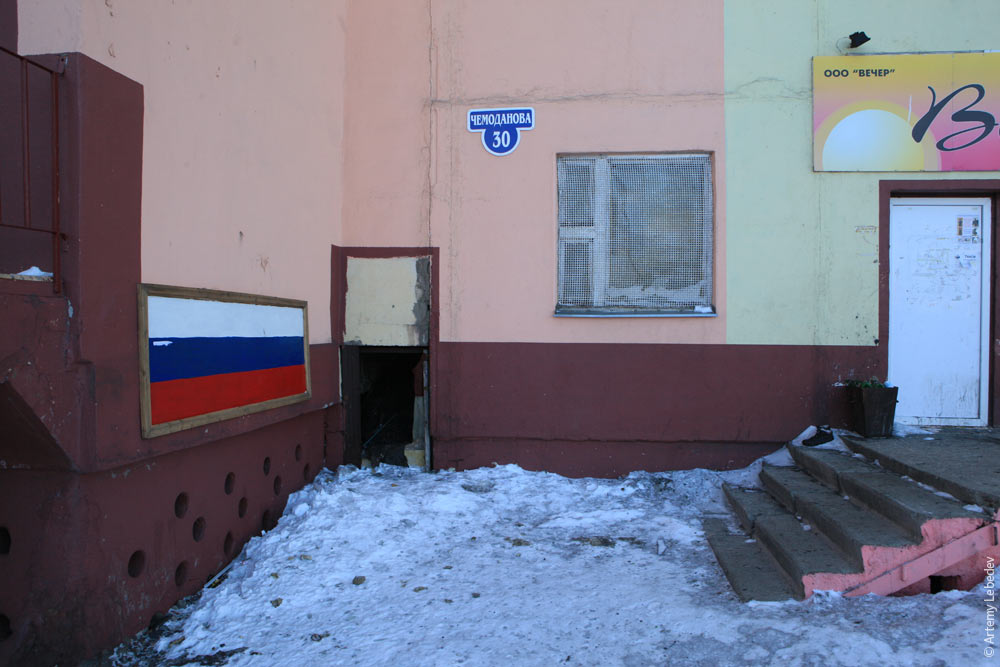 30 Chemodanova St. OOO “Evening.” The swings are frozen solid until spring. 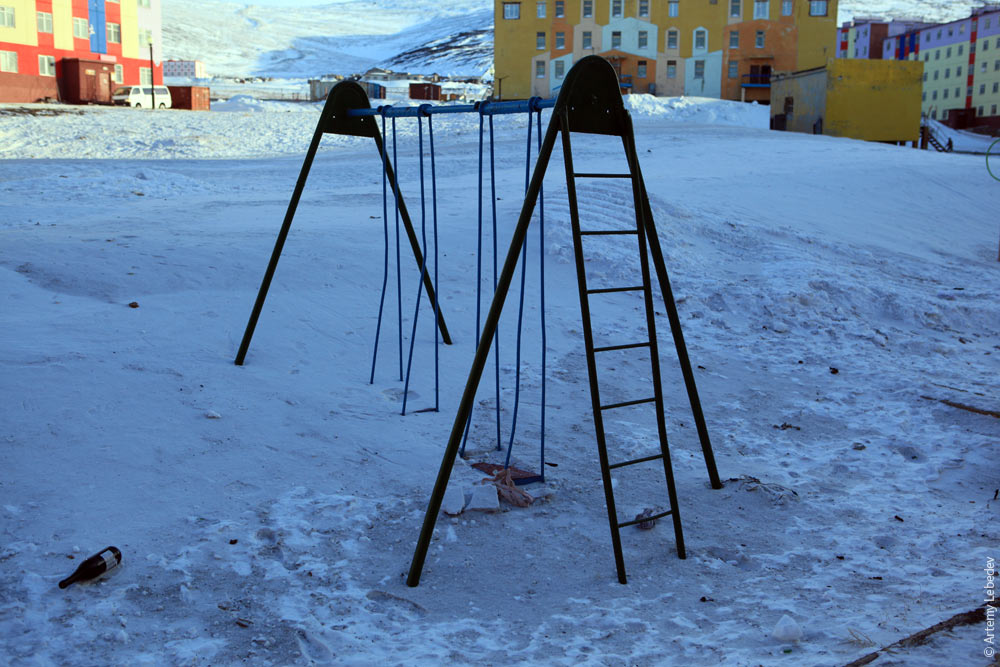 A curious PSA about protecting children from alcoholism. 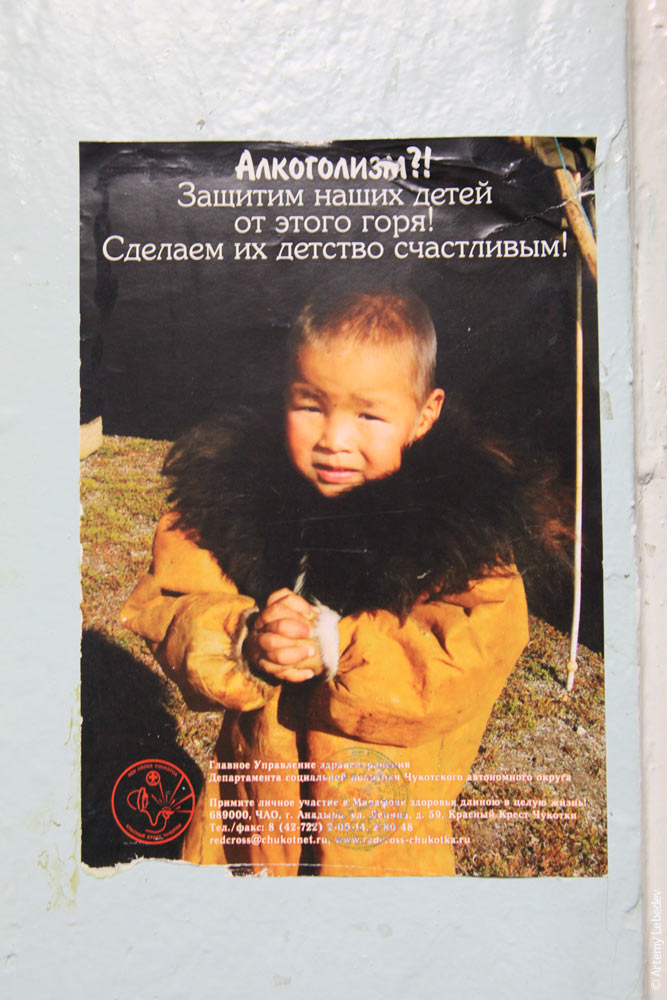 Alcoholism?! Let’s protect our children from this evil. Make their childhood a happy one! A Chukotka robot. 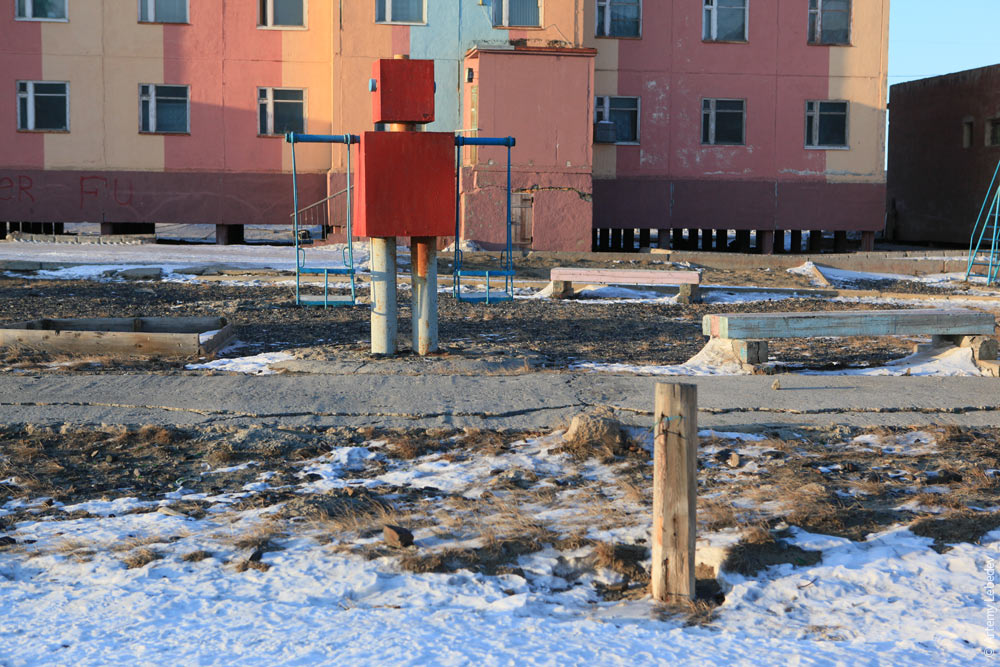 Trash dumpsters. 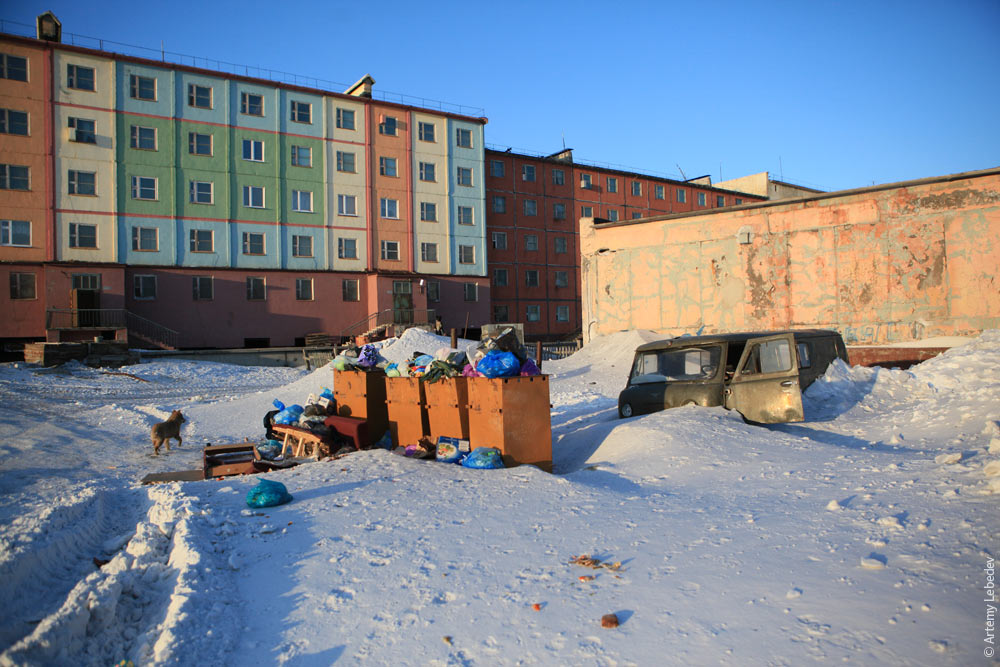 Life. 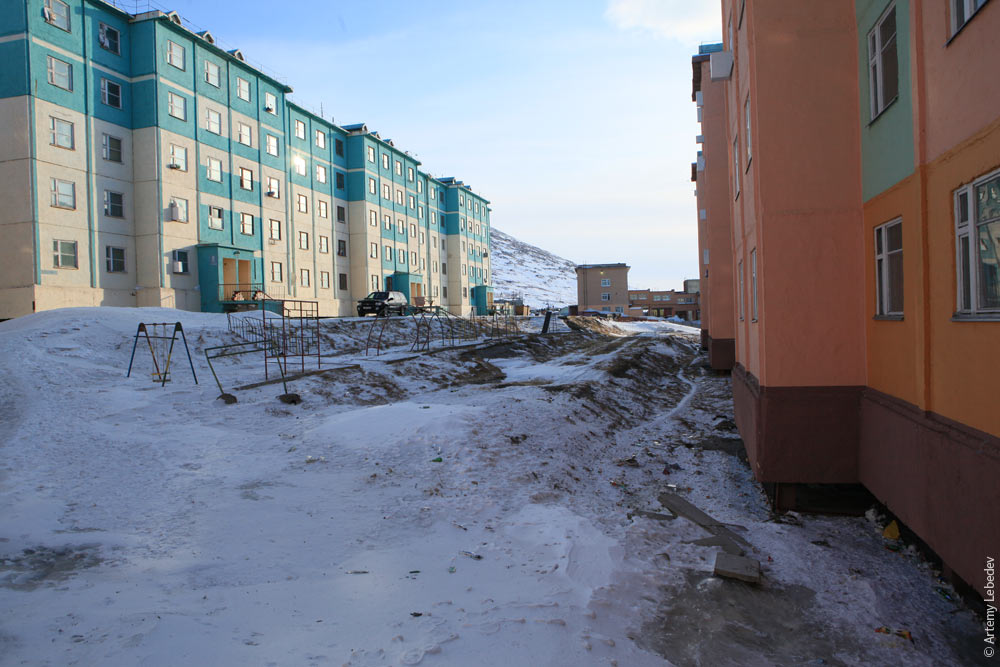 Half the buildings in the city are abandoned. 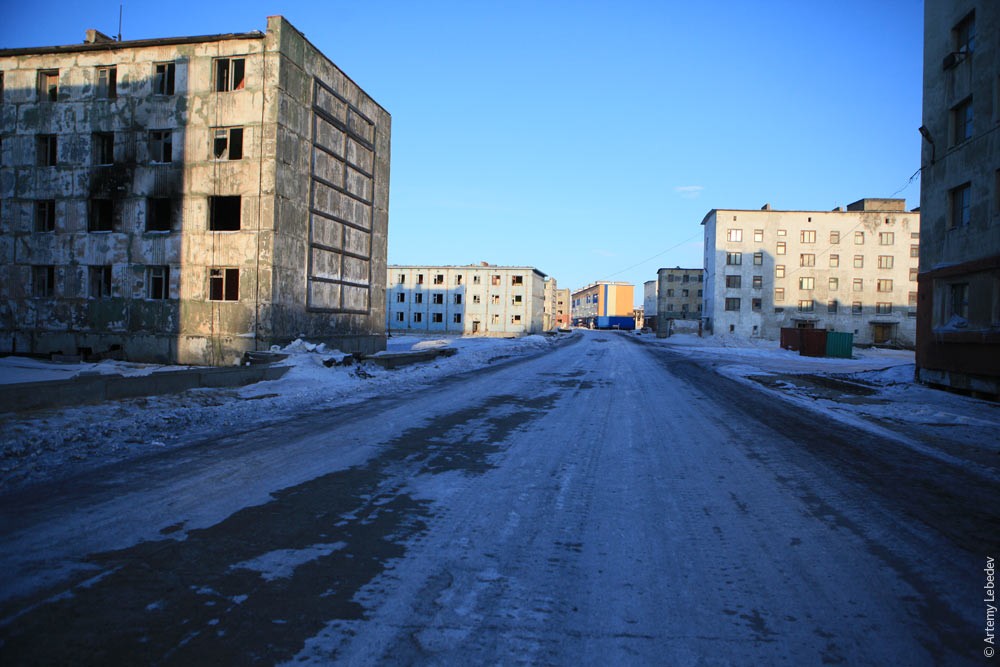 The city’s main landmark is the boiler building. It’s visible at any time of day, from anywhere in the city. 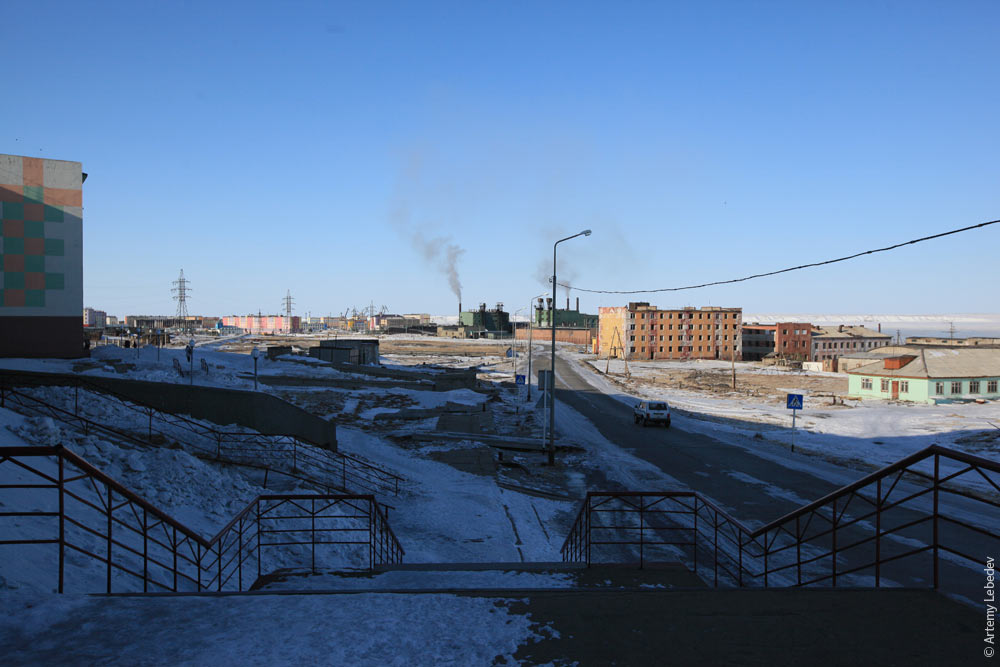 All the crosses and monuments at the cemetery are painted blue. 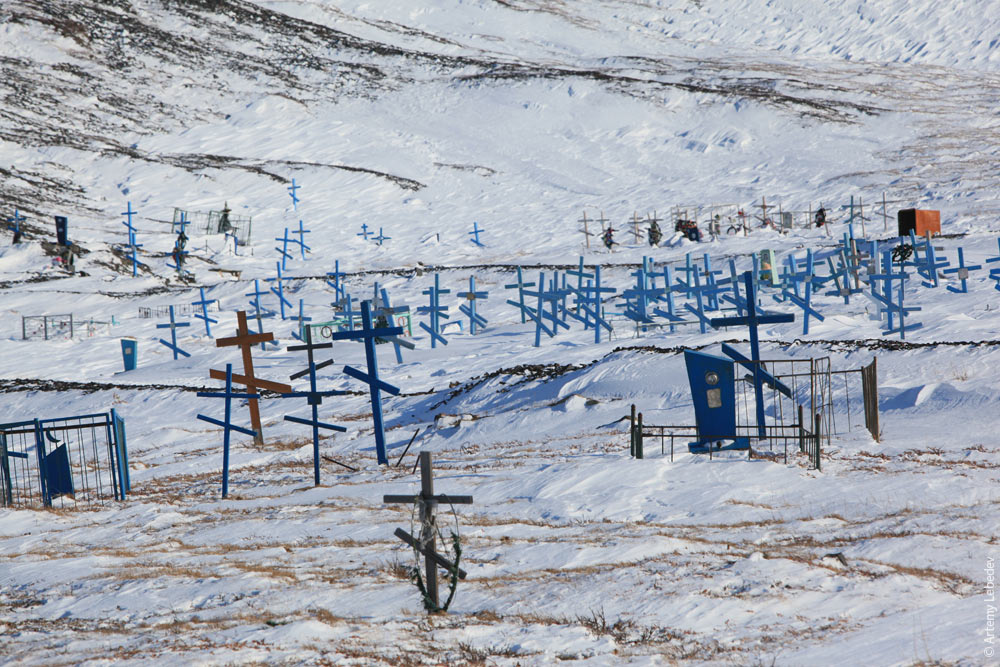 Pevek is the only city in Russia with a post box that’s painted brown. 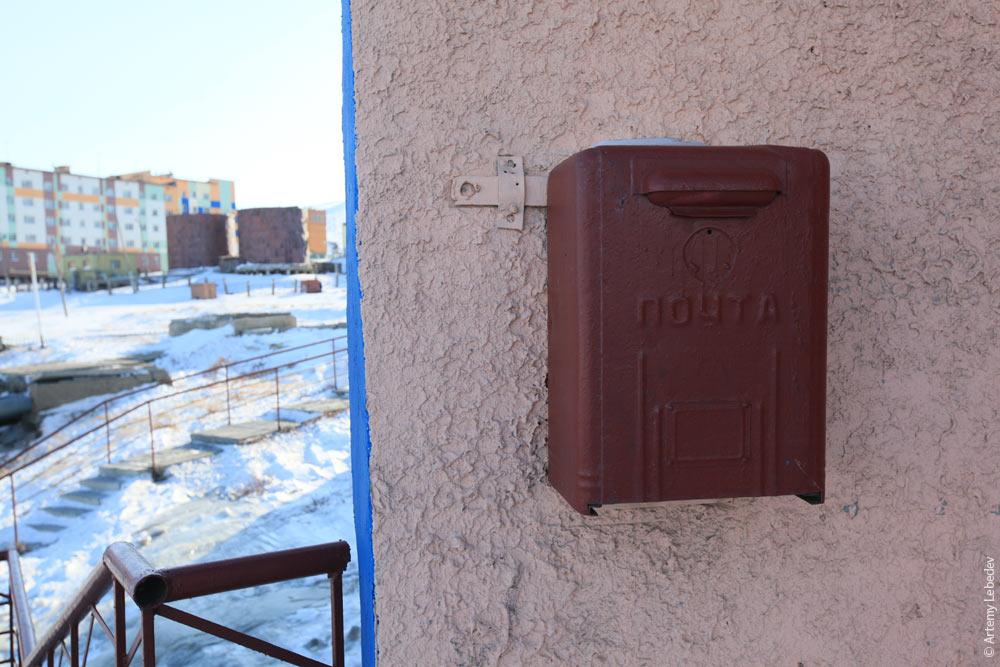 A park. 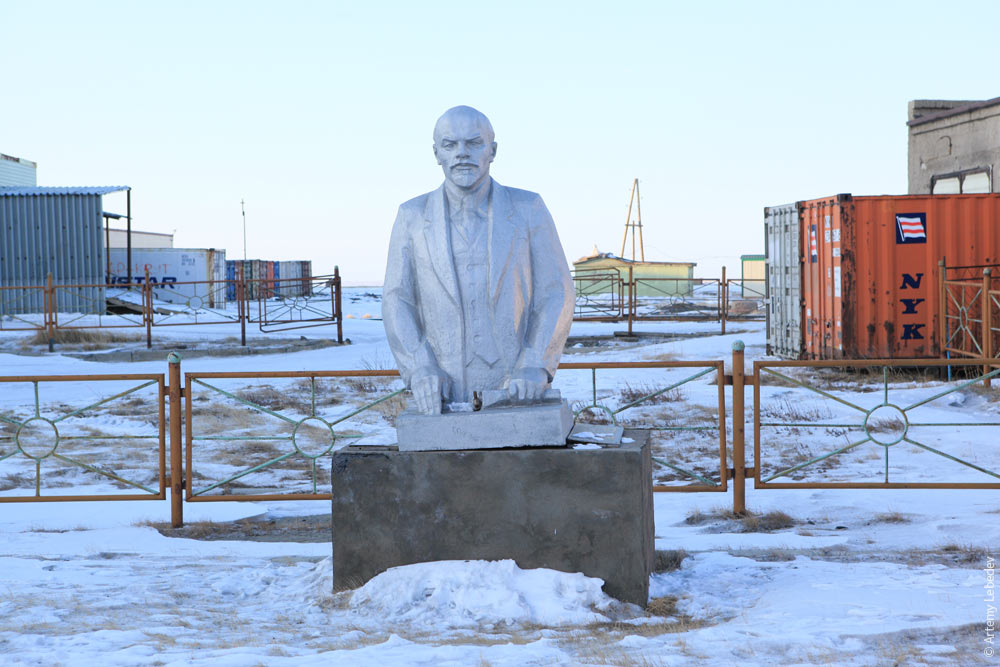 A seal has climbed out onto the ice in the spot where the municipal sewage flows out into the ocean. 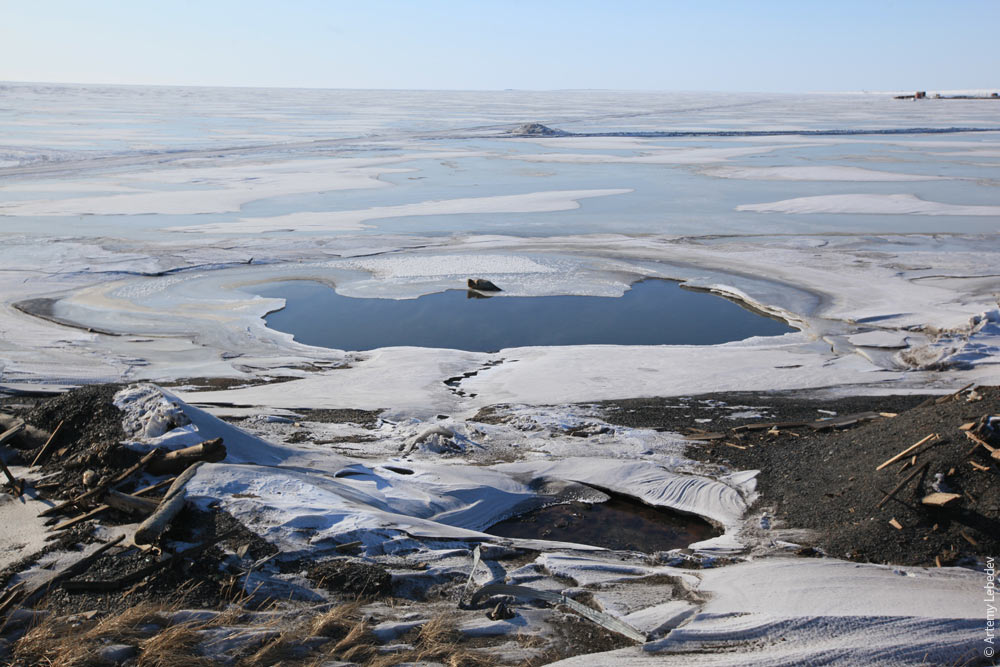 The airplane which is supposed to give Coucousique a lift to Magadan has arrived at the airport. 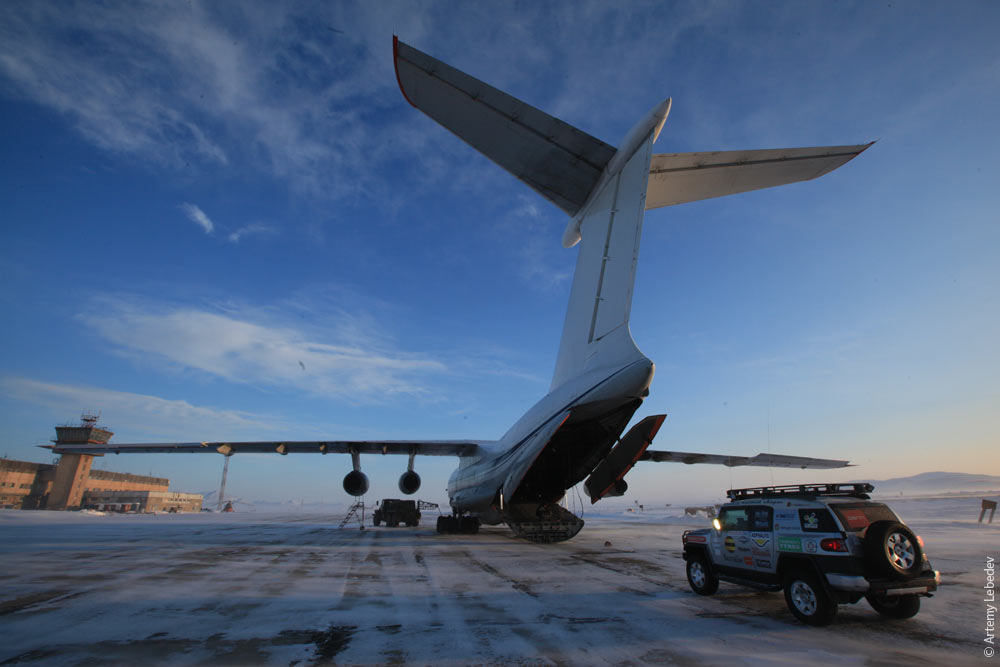 For some reason, absolutely everyone is convinced that Magadan is connected to the rest of the country via a railway. That’s not the case. There’s no railroad to Magadan. Once in Magadan, Coucousique will drive into a freight container. The container will be loaded onto a ship. The ship will sail to Vladivostok. And only in Vladivostok will the container be loaded onto a train and shipped off to Moscow. This will take over a month. And so the expedition comes to an end. And that’s a true story! If you don’t believe me, go see for yourself. |